Death By A Thousand Clearcuts
This article shines light onto the widespread degenerative logging practices in Canada, focusing on the current status of the very last intact old growth temperate rainforest watershed on Earth.
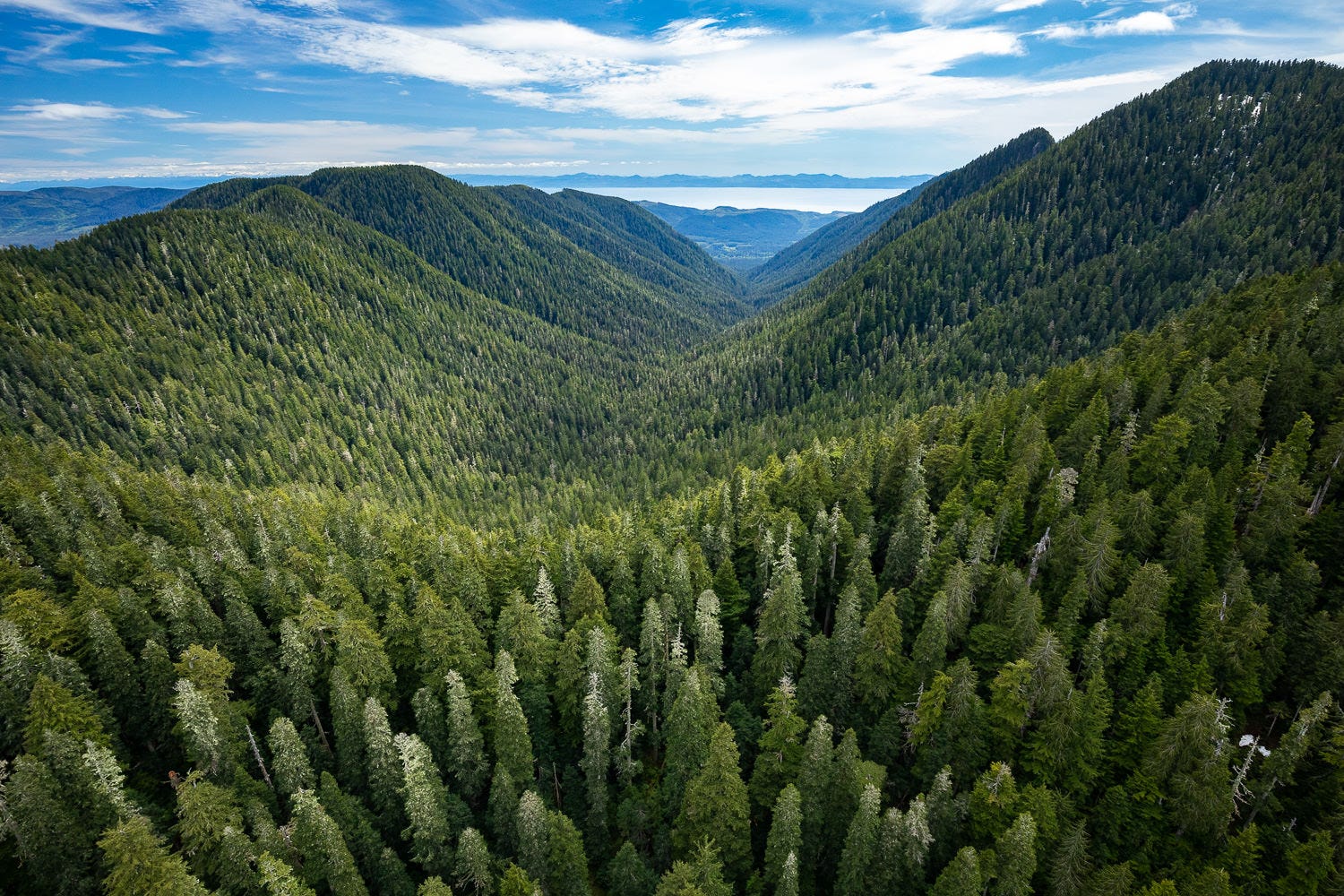
“Those who contemplate the beauty of the earth find reserves of strength that will endure as long as life lasts. There is something infinitely healing in the repeated refrains of nature — the assurance that dawn comes after night, and spring after winter.”
~ Rachel Carson, Author of Silent Spring
This article exposes a gaping wound in the interest of stimulating the potential for healing. Cleaning and tending to a deep wound that has become infected is never a pleasant experience, but it is necessary if one wants to save the patient. The patient is our Mother Earth and the wounds I will expose below are infected by festering corporate, government and law enforcement entities driven by greed. These interests that eat at the flesh of our Great Mother like a gangrenous plague are now threatening to cripple the capacity of her lungs, and thus we must now decisively identify these pathogenic elements so that they can be rendered inert and the wound can begin to heal.

Enter the story of the Fairy Creek Forest Defenders
After a over a century of extractive colonialism, imported anthropocentrism and capitalism fanning the flames of corporate abuse and environmental degradation, the movement to save the last stands of old-growth forests in British Columbia is growing exponentially.
In August of 2020, land defenders and a Pacheedaht Elder, Bill Jones, caught word that Teal Jones would begin building roads and logging ancient forests in the pristine Ada’itsx Fairy Creek watershed in a remote part of southwest Vancouver Island, where some trees are up to a thousand years old. Galvanized by the dire threats these endangered ecosystems face, activists began the Ada’itsx Fairy Creek Blockades, calling themselves the Rainforest Flying Squad.
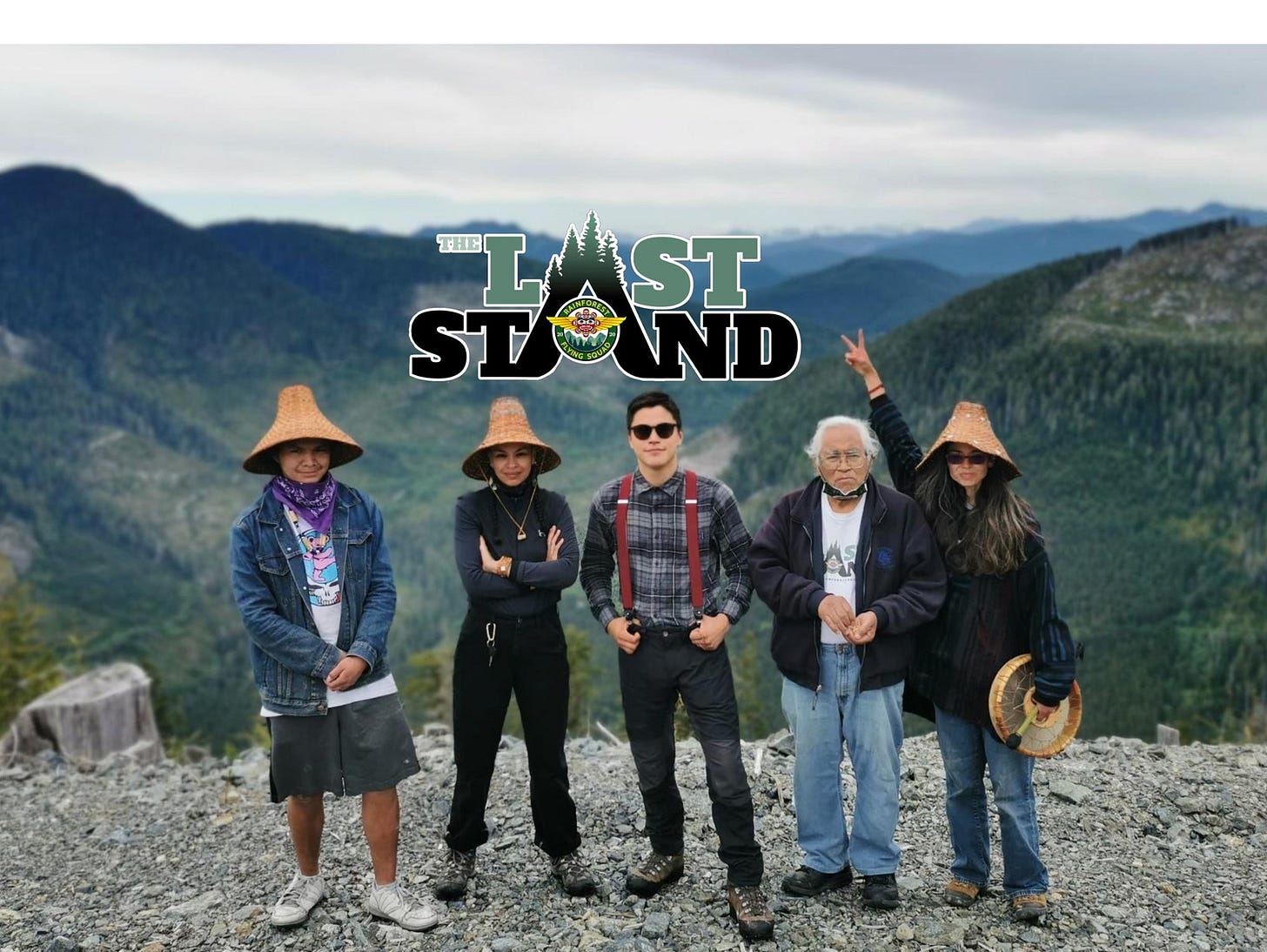
This video below offers a solid brief overview of the situation at Fairy Creek (from 2020 - 2021).
Indigenous Peoples have stewarded ancient forests since time immemorial; their culture, language, and identity are inextricably bound to these ancient giants. As Elder Bill Jones told the Watershed Sentinel, “The fact that they’re the last of the old growth – all the last of our spiritual freedom that we have in this world.”
The forest protectors held the line for over a year, in what has become the largest civil disobedience movement in Canadian history, Fairy Creek land defenders continued, for months at a time (in harsh weather, being beaten, mased and harassed by thugs with badges) to hold off logging operations that would finish off these ancient trees that predate colonialism and capitalism.
After many arrests of brave forest protectors, after many murdered ancient elders (some over 900 years old) and after much police brutality (with RCMP acting as corporate mercenaries) they finally got a judge to do an injunction (an order to temporarily stop the logging of the last ancient trees on Vancouver island) putting the profiteering on hold.
Our government in Canada is always saying how "green" and "sustainable" they are, meanwhile, that same government simultaneously supports, subsidizes and profits from clearcut logging of primary forests and endangered old growth stands in Canada.

The forestry regime in Canada follows a fundamentally colonial model, in which forest lands are treated as terra nullius. The assumption is that nature is capital, a resource to be managed and extracted from for society’s perpetual economic benefit. This idea is implicit in Canada’s forestry policy and history, most notably in the policy of “sustained yield”. Sustained yield is based on the concept that old-growth forests are an asset to be converted into tree farm plantations, managed by ‘science’, to yield timber resources in perpetuity. It leads to forest management regimes that involve stripping forests bare, killing their many inhabitants (Ecocide), then replacing them with monocrop tree farms devoid of “competing” vegetation and unable to support the wildlife populations that once called those diverse habitats home. This intensive tree farming system, designed to maximize timber yield, removes the very biodiversity that makes the forests so rich in the first place.
The people shown above and below with militarized equipment, armed with the weapons of war and the tools for silencing and crushing dissent (paid for by our tax dollars) are the hired mercenaries of a corporate oligarchy that is hell bent on transforming the living world into dead products, for profit.
Do not allow their badges and reassuring uniforms to confuse you, make no mistake, these are the foot soldiers and enforcement arm in a corporate war on nature.
These police officers that are involved in facilitating the destruction of the last remaining ancient temperate rainforest stands are complicit in acts of ecocide. Some may say “they are just following orders” or “just trying to make a living” but it always comes down to a choice. They chose to show up for that assignment just as the police chose to show up in Ottawa to serve as the enforcement arm for Big Pharma and just as the bankers chose to comply with the edicts of our corrupt government and freeze people’s bank accounts for peacefully protesting. The same goes for the loggers choosing to show up and cut down these last remaining sections of old growth rainforest in BC.
I was having a discussion with someone about this situation in a forum online recently and someone said “I can understand why someone working in logging though would value his personal finances over the environment though if he was supporting his family, maybe an ill relative. People are sometimes put in ethical dilemmas where they go against what they know to be right.”
This was my response.
I can appreciate the conscious choice to try and put yourself in someone else’s shoes to empathize (such as you did with the hypothetical logger in your comment) but there are several aspects of the hypothetical logger’s financial conundrum that I think are worth exploring further to illuminate some built in fallacies in the premise of their story.
First of all, I just wanna say that I have friends who are loggers and I had a forester in my family, I work in landscaping, so sometimes we choose to cut down trees as part of our job (as a last resort), we work with arborists regularly (some of which, I know personally and they used to be professional loggers) so the act of cutting down a tree and the dynamics involved in the logging industry (and those that choose to work in that industry) are dynamics of which I have intimate knowledge.
In order to deconstruct the myth of the hypothetical ‘poor logger man with 5 kids and a grandma that needs surgery (who feels forced to clear cut 1000 year old trees)’ we will first need to take account of the fact that there are plenty of logging jobs in BC that do not target the last remaining primary old growth temperate rainforest watershed IN THE WORLD.
Since there is only 2% of the original (“primary”) old growth temperate rainforest left in BC (which is the only section left in the world that has not been clear cut) you can understand that we have been chopping down very old trees and replanting monocultures of young ones for quite some time now. This means that there are plenty of re-planted (“secondary”) timber forests on Vancouver Island (and all over Canada) to be logged that are not sensitive ancient rare ecosystems or primary forests with the last original trees living in them. The difference is that logging corporations and government entities make significantly more money chopping down the ancient (primary) trees, as opposed to the replanted (secondary) ones.
When a logger takes a job to cut down old growth in BC, that means being willing to drive past the hundreds of indigenous people and other forest protectors attempting to block the roads and into “the exclusion zone” (which is the area that was guarded by militarized RCMP with lethal weapons, tasers, mace and zap straps) to chop down the very last thousand year old trees of an intact watershed in existence on the Island. They know exactly what they are doing.
Now it is also worth noting that loggers are not inept, helpless, stupid people that are unable to put their significant skills with machines and physical endurance to use in one of many other jobs that are available in that region (that do not involve the destruction of the last old growth trees or primary forests).
They have a choice. Even if that was the only possible job available to them (which it isn’t) they still have a choice.
Some people are making the right choice (regardless of their current occupation) Here is one such example:
“B.C. ranchers, loggers unite in fight against plan to log rare inland old-growth rainforest”
I was “just following orders” I was “just trying to pay the bills”.. these lines could be used to justify the choices being made by a mass murdering fascist soldier or death camp ‘doctor’, the modern day equivalent (nurses/doctors continuing to pump people full of mRNA injections without having done their homework on the contents of those injections or pumping people full of remdesivir on ventilators even after seeing first hand what the results will be) or an RCMP officer smashing a woman’s face with a baton or shooting her with a gas grenade when she is peacefully protesting for medical freedom in Ottawa or a logger taking a job to chop down healthy 1000 year old trees.
I suppose the question we should be asking ourselves is, how would we feel if it became more profitable to kill our parents or our grandparents to someone in an industry and they decided to do so because they would value their personal finances over the life of our loved one ?
While some might say that the hypothetical built into my question is absurd or outlandish, there are in fact human beings in positions of obscene material wealth on our planet now that see human beings in exactly that way (as “resources” or “live stock” to be managed, culled, monocropped, profited from and controlled how they see fit).
Thus, I feel that if we acquiesce, passively accept and/or attempt to rationalize the kind of behavior that resulted in what is shown in the images shared in this article, we are feeding into the industries, institutions and machine like way of thinking that will expedite our arriving at a time and place in which each and everyone of us will be treated exactly as those ancient trees are being treated now.
The following are some pictures that illuminate the true nature of what happened (and what is soon to happen again at Fairy Creek).
On June 8th, 2021, the B.C. government accepted a request by the Pacheedaht, Ditidaht and Huu-ay-aht First Nations to defer old-growth logging for two years in the Fairy Creek watershed and Central Walbran areas on southwest Vancouver Island.
“Today, cabinet has approved a request by the Pacheedaht to defer old-growth forestry in Fairy Creek as well as the Central Walbran,” Horgan told reporters at a news conference. “This is critically important for a number of reasons. Most importantly, we have allowed, as a province, the title holders to make decisions on their lands.”
Horgan said the decision to defer logging while the three nations prepare resource management plans is consistent with the government’s commitments to reconciliation with Indigenous Peoples and to protecting old-growth forests.
“The first step in protecting old-growth must be respecting Indigenous Peoples’ land-management rights in their territories,” the premier said.
The announcement, made during a news conference, came as the RCMP continued to arrest protesters who have been camping in the Fairy Creek area since last summer of 2020 in an attempt to prevent old-growth logging of the valley in Pacheedaht territory.
More than 1000 people have been arrested since forestry company Teal-Jones obtained a court injunction in to allow the arrest and removal of protesters from access points to planned logging in the Fairy Creek area.
However, On June 8 2023 the deferral on Fairy Creek will expire, and the watershed will RE-OPEN to logging. Teal Jones has 10 CUT BLOCKS planned in and around Fairy Creek. Please do what you can to raise awareness.
For more info: https://www.nationalobserver.com/2022/01/26/news/logging-company-wins-appeal-extend-fairy-creek-injunction
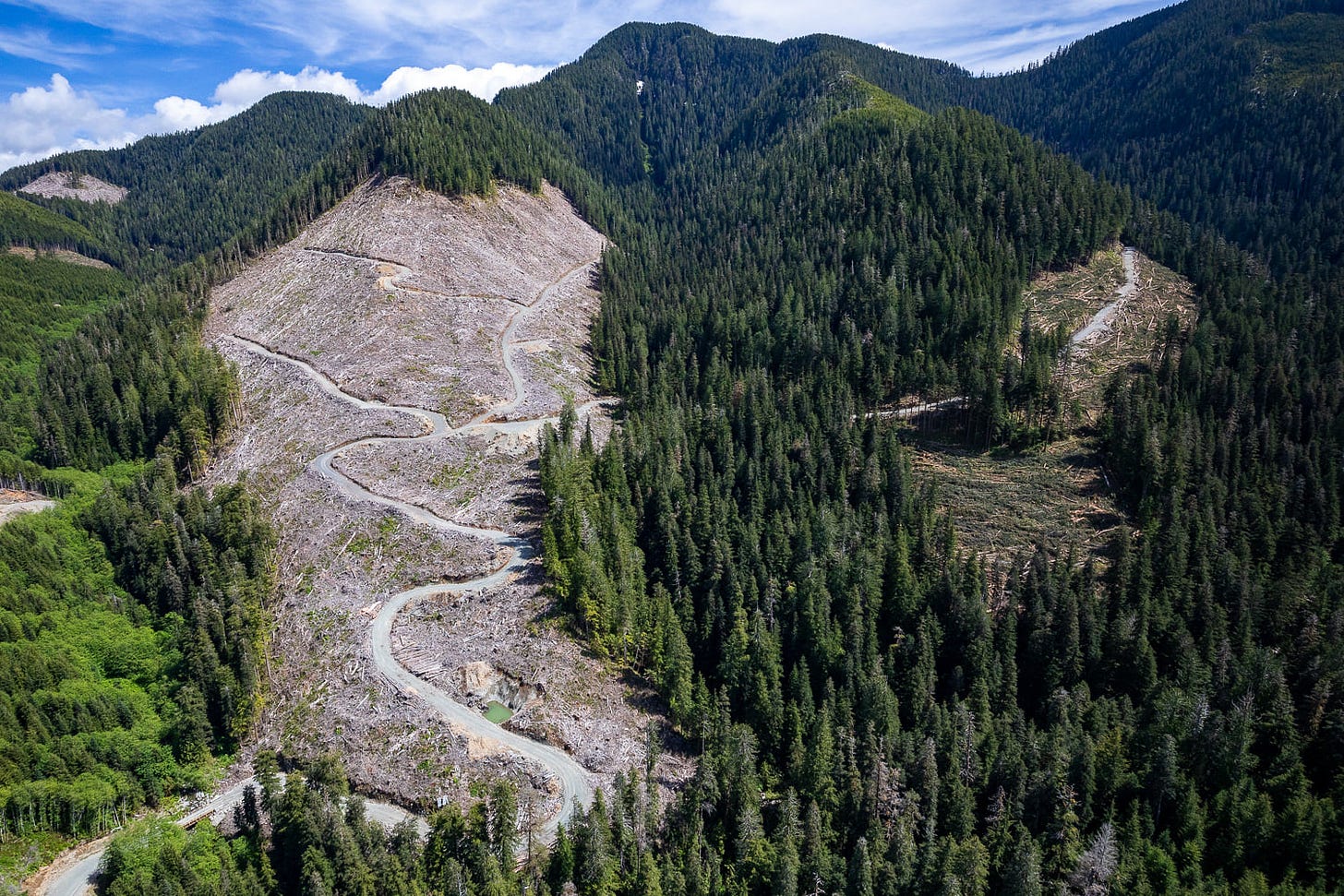
There is less than 2% of the ancient temperate rainforest left in BC, and as of June of this year our corrupt government and police intend to help psychopaths cut down and carve up these ancient beings for profit.
As hundreds of protesters trying to stop logging of old-growth forests were arrested at Fairy Creek on Vancouver Island last year, the B.C. government raked in big money from logging companies. In total, it collected more than $1.8 billion dollars in stumpage fees — a number that would have been higher still but for the protests.
Nothing in the past 15 years comes close to that revenue benchmark, a figure that underscores that it is not just the logging companies who benefit financially from logging old-growth or primary forests, but the provincial government as well.
The situation is just as bad in the provinces where Paper Excellence now has a foothold. Over the past 20 years, old growth forests in British Columbia have been cut in half.
The Colonialism never stopped, it just put on a smiling face and a mask and now instead of soldiers massacring villages and exterminating Buffalo to starve indigenous peoples so their land (and the "natural resources" on and under them) could be pillaged, the courts and the RCMP are being weaponized and militarized to act as Corporate Mercenaries.
“The C-IRG: the resource extraction industry’s best ally” : https://briarpatchmagazine.com/articles/view/the-c-irg-the-resource-extraction-industrys-best-ally
The horrifying violence the C-IRG uses to remove forest defenders from places like Fairy Creek shows that they are nothing more than hired thugs for corporate extractive industries. Briarpatch investigators interviewed C-IRG commander John Brewer, confirming that he ordered officers to remove their name tags and police badges – making them nearly impossible to identify and hold accountable for their actions.
This same tactic was used in Ottawa when Canadian police from various regions decided they would follow orders to serve as the enforcement arm for Big Pharma.
Documents obtained by Wet’suwet’en land defenders through an access-to-information request, highlighted that over $18 million in public money has been spent between 2018 and 2021 to enforce Coastal GasLink’s injunction against the land defenders on Wet’suwet’en territory.
I explored the abhorrent abuses of the RCMP on the Wet’suwet’en people in this post
Special RCMP unit spends $50 million to crush opposition to pipelines and old-growth logging: https://www.marxist.ca/article/special-rcmp-unit-spends-50-million-to-crush-opposition-to-pipelines-and-old-growth-logging
This is 𝗱𝗲𝗮𝘁𝗵 𝗯𝘆 𝗮 𝘁𝗵𝗼𝘂𝘀𝗮𝗻𝗱 𝗰𝗹𝗲𝗮𝗿𝗰𝘂𝘁𝘀 and we are actively funding it with our tax dollars.
Unprotected old-growth forests are at risk all over B.C.. As stated above, less than two per cent of the province’s biggest, most ecologically important old-growth remains, according to a report from a trio of independent scientists who used to work for the B.C. government.
In the interior, the rare inland temperate rainforest, home to endangered caribou and cedar trees more than 1,000 years old, is at imminent risk of clear-cutting. Earlier this year, a Prince George-based forestry company applied for an exploratory permit to build a logging road through a provincial protected area in the intact Raush River Valley near McBride to access rare old-growth stands.
Amid record deforestation, an unprecedented corporate takeover has been taking place.
Since 2000, Canada has lost more than 19.6 million hectares of primary forest, the third highest rate of intact forest loss in the world after Brazil and Russia. B.C. saw by far the biggest decline in tree cover of any province, losing more than 8.5 million hectares.
Much of that loss has been due to the pulp and paper industry. Roughly 40 per cent of the trees cut in the province every year end up in a pulp mill, according to data collected by Canopy, a Vancouver-based organization that works with over 900 major brands to create so called "sustainable" forestry supply chains.
The pace of loss comes as decisions over Canada’s forests are increasingly being concentrated into the hands of one private company — Paper Excellence. This month, the company acquired Resolute Forest Products, making it the largest forestry company in North America. Paper Excellence now controls 22 million hectares of Canadian forests and has ownership over 37 pulp and paper mills across Canada, the U.S., France and Brazil.
Paper Excellence has said between 10 and 14 per cent of the wood feeding its mills comes from old-growth trees.
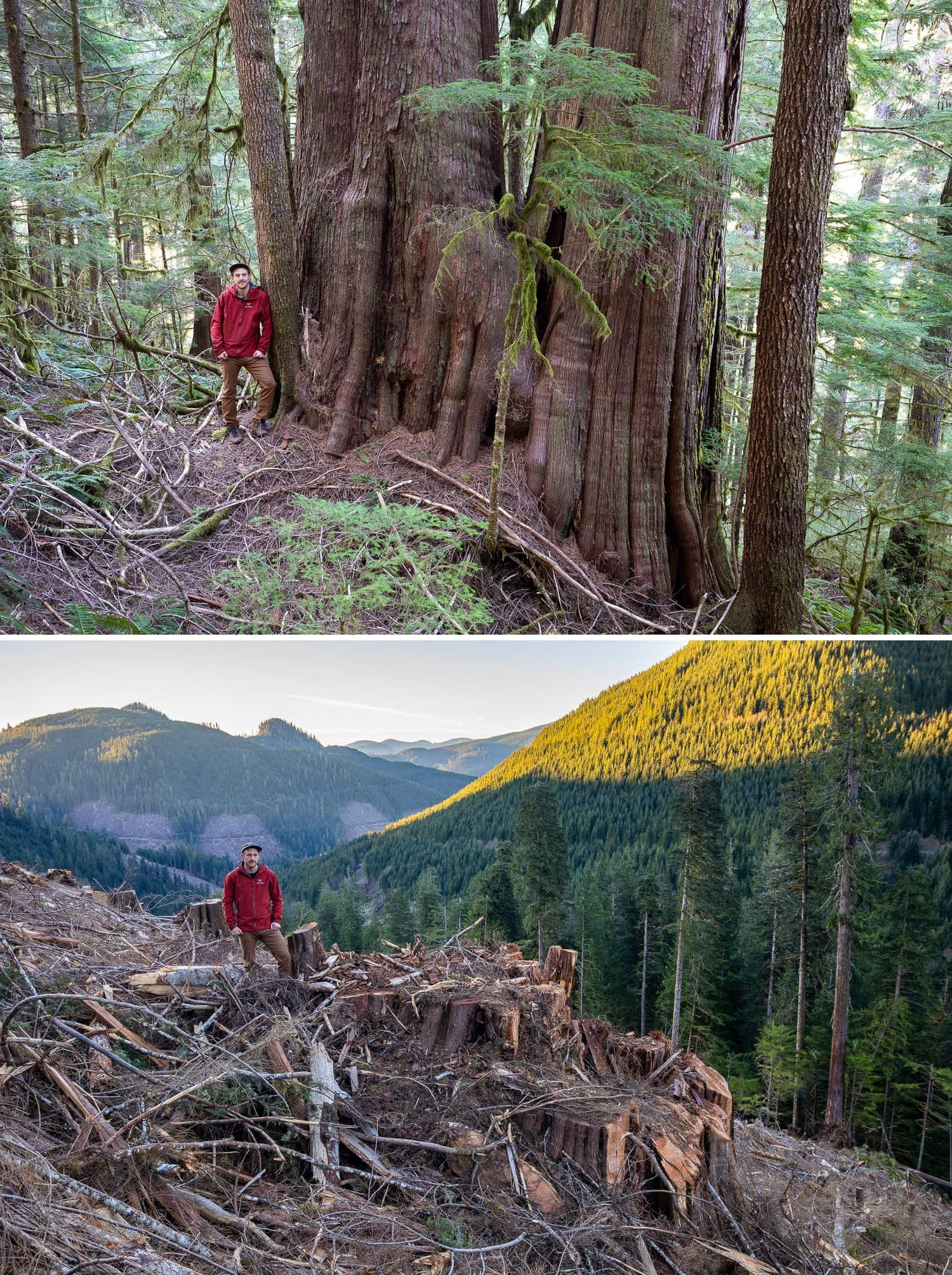
In the last 20 years, B.C.’s old-growth stands have been cut in half, and government data shows industry is targeting the bigger, iconic old-growth trees, says Rycroft. That’s led to serious declines in several species that rely on intact primary forests, like moose, caribou and the spotted owl.
Paper Excellence now controls forest lands seven times the size of Vancouver Island
As Paper Excellence expands east into Ontario and Quebec, some Métis groups and First Nations have raised concerns around Paper Excellence takeover of the Boreal Forest.
The logging corporations and government don’t see eye to eye on everything, but they share a financial interest in maintaining abundant, free-flowing lumber and fibre.
This free-flowing fibre has delivered vast wealth to not only to corporations but also the B.C. government, who has acted over decades to protect revenue even when there are significant impacts to biodiversity and violations of Indigenous Treaty Rights.
Take Canfor’s Tree Farm Licence 48. It’s a 643,000-hectare harvest area in the middle of endangered central mountain caribou habitat in Treaty 8 — West Moberly and Saulteau First Nations territory in northeastern B.C. Appellate courts have repeatedly recognized government-authorized industrial activity is driving caribou decline in the region, violating the treaty. Forestry is the leading cause of caribou decline here, but in Tree Farm Licence 48 Canfor’s annual harvest has almost doubled since the federal government passed the Species At Risk Act in 2002, which is also when central mountain caribou were listed as threatened. From 2002-2021, the B.C. government collected an average of $7.6 million per year in stumpage from this license.
For at least six decades, the B.C. government has (mis)-managed the forestry and biodiversity crises by ramping up public expenditures to try to entice corporate forest giants to stay. This time looks no different. Based on the federal office of the auditor general’s definition of a subsidy, we calculate that 89 per cent of B.C.’s funding announcements for the forestry sector since the new year are subsidies.
The people behind and/or associated with Paper Excellence have a pattern of using thickets of corporations, including in tax havens, effectively shielding transactions and assets from public and government scrutiny.
Freedom of information requests revealed the origins of some of the company’s past financing, some of which was facilitated by the China Development Bank, which is owned by the Chinese government.
Leaked records and insider accounts also show that Paper Excellence, appears to have been closely — and secretly — co-ordinating business and strategy decisions with Asia Pulp & Paper, one of the world's biggest pulp-and-paper players, which has a track record of environmental destruction.

Speaking for the Old Growth
(Famed tree botanist Diana Beresford-Kroeger has a tough message for BC Premier John Horgan) : https://thetyee.ca/Opinion/2021/07/12/Speaking-For-The-Old-Growth/
“The liquidation of B.C.’s ancient forests and their rare genetic richness, represents a direct assault on Indigenous people and their ability to survive,” she argues. “It is a form of mass murder.”
Beresford-Kroeger knows a thing or two about colonialism. Orphaned at an early age, she just barely escaped the clutches of Ireland’s dreaded Magdalene Laundries, brutal residential schools for orphans, unwed mothers and prostitutes.
Raised by traditional Celts in the old ways and Brehon Laws, she learned how England’s colonialism systematically robbed the Irish of their language, customs and, yes, their once great forests.
Ireland once had magnificent forests but the Roman Empire and later the patriarchs of the British Empire played a powerful role in their destruction, all for money.
It is like burning down a people’s pharmacy, library, kitchen and heritage all at the same time.
“I have been asked to put a dollar value on the trees of Fairy Creek,” she’d tell the premier just as she has told young protesters in letters of support.
“These ancient trees are priceless, like a smile in the eyes of a happy child, like the Mona Lisa, like a careful cougar, like good health, priceless. Nobody understands the web of life, let alone can put a dollar value on it, or on the future, which is coming down, now, tree by tree.”
Does the premier want to be responsible for exterminating some of the world’s largest and oldest oxygen makers?
Intact old-growth forests, she would point out, remain our best natural defence against dangerous climate volatility because they have witnessed the greatest climatic variations overtime.
“The old-growth forests determine weather patterns. They initiate the release of aerosols. The trees produce a huge variety and volume of aerosols. These aerosols go looking in the atmosphere for hydroxyl molecules to make water and determine where the water will fall.”
Next she would remind Horgan that ancient forests do more than moderate precipitation patterns.
They regulate fish in the ocean by feeding the sea with vital minerals essential for plankton development. Traditional peoples in Japan encapsulated this essential knowledge into a proverb: “If you want to catch a fish, plant a tree.”
“These ancient coastal forests represent a giant cycle unique to the world,” she would tell the premier in an attempt understand the gravity of his decisions, the need to declare a moratorium on old-growth logging in his province. “When you reduce the forest, you are tampering with your fisheries and atmosphere and rain patterns.”
She’d finally tell John Horgan that time is running out. The debate is ending. The moment to act is not tomorrow but yesterday. We’ve got to think about labour and new kinds of work. We have to de-industralize logging and restore community forests.
“We all share planet earth. Our actions affect everybody. Should you remove oxygen from a dying child?
And then Beresford-Kroeger would bid the premier good day with a final caution.
Remember, she would add: “Time is running out and we are going to need these libraries of medicine for our uncertain future.”
So, taking a step back, you can see that now we have Old growth trees being shipped to China for Pulp profits and shipped to the UK to burn for power, the last of the Oldgrowth in BC is being auctioned off and thousands of kilometers of clear-cutting across Canada's Boreal Forest continues.
Chief Keith Corston, of Chapleau Cree First Nation, says the boreal in northern Ontario is at a tipping point, and if steps are not taken, there will be no boreal forest left within 30 years. He disagreed that Canada has “world-class sustainable forest management practices”.
"They are basically raping and plundering the resources on the land. They use words like 'sustainable forest.' It's not sustainable."
Loss of iconic wildlife like caribou, soaring emissions from unsustainable logging and failure to protect old growth have prompted some of the largest acts of civil disobedience in Canadian history.
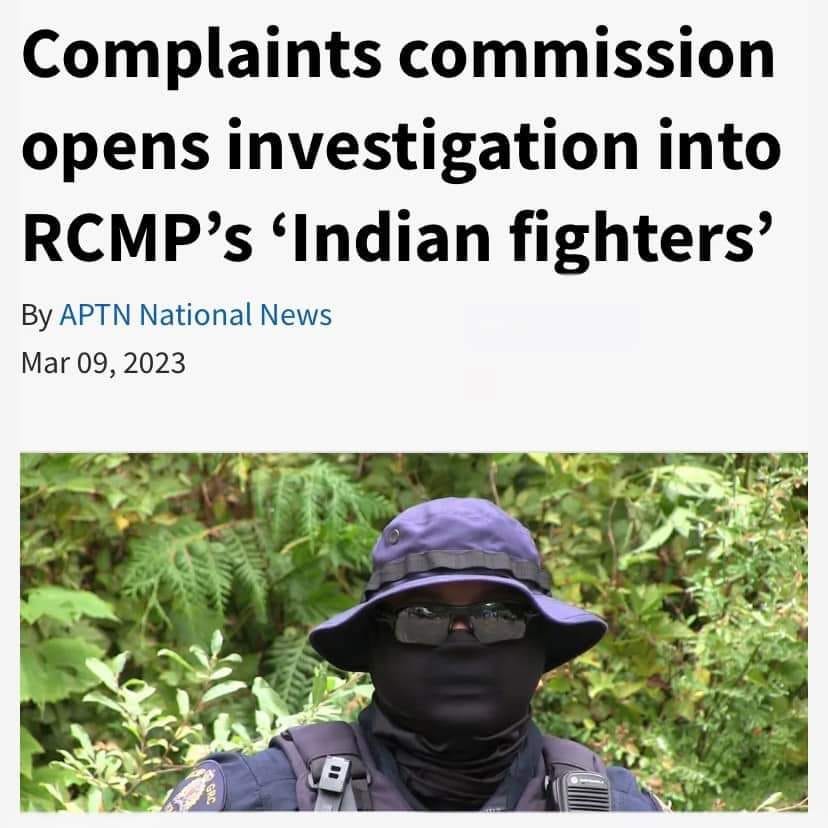
Prominent First Nations activists call them “Indian fighters” and “oil and gas mercenaries,” but few know what this outfit is, why it was created, or how it operates.
APTN News spent months investigating the C-IRG, obtaining more than 4,000 pages of court files and releases from more than two dozen federal and provincial freedom of information requests.
APTN uncovered a broad suite of allegations against the unit that include intimidation, torture, brutality, harassment, racism, theft, destruction of property, arbitrary detention, inhumanity, lying and deceit.
If you want to see what these glorified corporate thugs are about check out this video where the specialized RCMP unit rips surgical masks off faces in the crowd, knock off their hats and rub the burning chemical agent in their eyes. Or this video where an officer is seen forcefully thrusting his hand into a protester’s face, in a move onlookers claimed was an intentional ‘eye jab.’ Many blockaders have reported their eyes being gouged by RCMP officers.
The history of the C-IRG
The founding of the C-IRG in 2017 coincided with increased organizing around issues related to land, resource extraction, settler colonialism, and the environment, especially on the land currently known as B.C. A number of movements contributed to a climate of increased Indigenous and environmental mobilization that precipitated the C-IRG’s creation: the Wet’suwet’en Nation’s resistance to the Coastal GasLink pipeline; several coastal First Nations’ protests against Enbridge’s Northern Gateway pipeline; Coast Salish Nations’ resistance to the Trans Mountain pipeline expansion; the Secwepemc Nation’s Tiny House Warriors; Idle No More; Treaty 8 First Nations’ protests against B.C. Hydro’s Site C hydroelectric dam; Justice for Missing and Murdered Indigenous Women; and the protests following the Mount Polley mine disaster.
In an interview C-IRG Gold commander John Brewer spoke about why the specialized RCMP division was created by saying “we weren’t really learning from past events, we weren’t keeping that corporate knowledge, and we certainly weren’t ensuring that we had the right people in the right place at the right time.”
You read that right, “corporate knowledge”, strait from the horse’s mouth. These people are hired guns for corporate mobsters seeking to pillage our Mother Earth.
The C-IRG is made up of RCMP officers who have volunteered to join the detachment. Temporarily transferred from their regular duties, Brewer says, “they come [from] across the board in policing, whether they’re uniform, traffic, plainclothes, doesn’t matter.” Money is a significant incentive to enlist in the C-IRG, as the job position offers earnings up to $100 per hour and working 18.5-hour shifts.
C-IRG training explicitly parrots industry talking points, which points to collusion between the oil and gas industry and an allegedly “impartial” police force.
As noted above, the C-IRG has been deployed at Fairy Creek, where forest defenders are protecting ancient and sacred old-growth trees; on Wet’suwet’en territory, where land defenders are blocking the construction of the Coastal GasLink pipeline; at fish farms, where Indigenous activists have camped out to protect wild salmon populations; at the Site C hydroelectric dam, which local Indigenous Nations have opposed because it violates Treaty 8; and on Coast Salish territory at Burnaby Mountain and on Secwepemc territory, where land defenders are resisting the Trans Mountain pipeline expansion.
Sleydo’ (also known as Molly Wickham), a spokesperson for the Wet’suwet’en people, and a Gitxsan land defender, opposing the Coastal GasLink pipeline through Wet’suwet’en territory reports that the C-IRG and other RCMP detachments have blocked access to Wet’suwet’en lands, prevented them from engaging in cultural activities, and interrupted ceremony on multiple occasions.
“We just avoid certain parts of our territory when we want to go do cultural activities,” Sleydo’ explains. “The Elders have been terrified and scared and don’t actually even want to come out to the territory anymore because they don’t want to be surveilled and harassed by RCMP. So they’re violating our Indigenous Rights to access our own territory, to access our homes, to engage in our cultural activities, while they facilitate the destruction of our territory.”
In short, even though Brewer and the C-IRG would never admit it, the C-IRG exists primarily to protect resource extraction where it might be impeded by Indigenous-led resistance.
There’s nothing new about that. Ever since the founding of the RCMP’s predecessor, the North West Mounted Police, Canadian police forces have worked diligently to remove and estrange Indigenous Peoples from their land. This required a constantly evolving set of government policies and institutions – from Métis scrip to residential schools – all with the same two end goals: to eliminate Indigenous Peoples and their ways of life and to secure unfettered settler access to land and resources.
They are essentially the next wave of soldiers continuing the imperialistic colonial assault on the ecosystems of Turtle Island and the indigenous peoples who call this land their home. This trend to pillage the earth and steal land from indigenous people is nothing new for the Canadian government.
What is new, however, are some of the tools and techniques employed by the C-IRG today: media exclusion zones; pain compliance; stimming; the removal of name tags and police badges.
The physical violence of the C-IRG has been well documented. Many have described police officers dragging Indigenous forest defenders by their braids, pepper spraying forest defenders’ genitals, using LRAD weapons, and punching them in the face. What’s been less widely discussed is the C-IRG’s psychological warfare.
In a recent article published in the journal Settler Colonial Studies, researcher Andrew Crosby notes that in police reports, Indigenous political grievances are dismissed “within stereotypical tropes of Native greed, of acting out of individual self-interest.” As Crosby explains, “security officials deploy designations such as ‘factions’ or ‘splinter groups’ to marginalize and delegitimize those community members seen as acting outside the authority of the band council system.” This is one of the ways that industry and their allies, the police, discredit Indigenous movements.
C-IRG officers are also directed to use a technique they call “stimming”: the use of repeated noises, lights, intimidating gestures and other disturbances intended to unnerve or irritate protesters. “It’s kind of like a psychological game or warfare, where you turn bright lights on, turning the siren on, walk through the camps non-stop all night long so no one gets any sleep,” he says. “Keep people awake, keep people on edge, keep people agitated.” The goal is to create unrest, weaken the movement’s cohesion from the inside, and force forest defenders to leave the front lines. There is seemingly no limit to the types of harm the C-IRG is willing to inflict on protesters – not just physically while conducting arrests, but mentally, even while they’re trying to sleep.
C-IRG is paid for through a 70:30 cost-share agreement between the provincial and federal government. In other words, as stated above, our tax dollars are being used to further private, corporate interests. It’s essential to stop the flow of money to industry’s mercenaries.
Tax resistance, a form of direct action used in movements from anti-war to women’s suffrage, is the refusal to pay taxes in protest of certain unjust uses of tax revenue.
The evidence is clear, we live in a time when our tax dollars are being used to fund the creation of viscous teams of corporate mercenaries that use a combination of invasive surveillance, psychological warfare and physical brutality to pave the way for corporate interests to destroy the last remaining primary forests of the temperate rainforest and the boreal forests of Canada. These are hired thugs and they are choosing to play a part in killing ancient beings, for profit, and destroying rare places of indescribable beauty. If we allow them to continue, they will ensure that our great grandchildren are not able to know the majesty, beauty and soul healing gifts that the beings in these ancient forests offer to share with humanity.
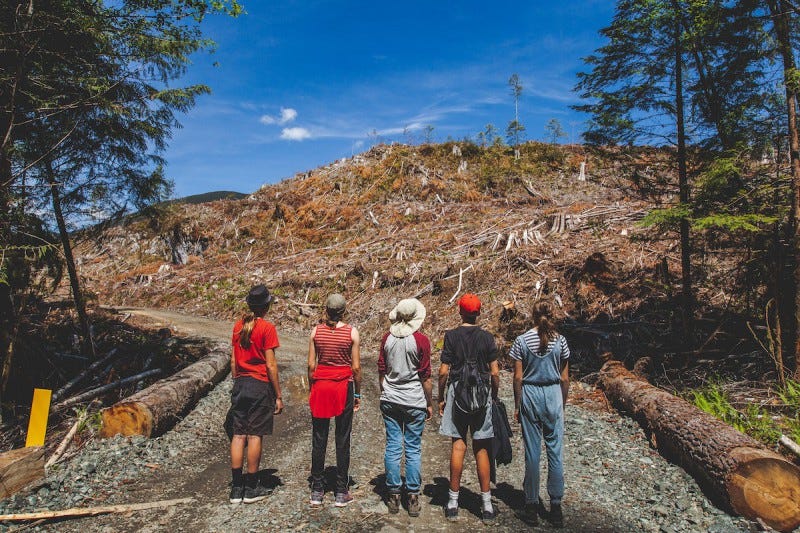
"People who thus set their lives against destruction have necessarily
confronted in themselves the absurdity that they have recognized in
their society. They have first observed the tendency of modern
organizations to perform in opposition to their stated purposes. They
have seen governments that exploit and oppress the people they are sworn
to serve and protect, medical procedures that produce ill health,
schools that preserve ignorance, methods of transportation that, as Ivan
Illich says, have 'created more distances than they... bridge.' And they
have seen that these public absurdities are, and can be, no more than
the aggregate result of private absurdities; the corruption of community
has its source in the corruption of character. This realization has
become the typical moral crisis of our time. Once our personal
connection to what is wrong becomes clear, then we have to choose: we
can go on as before, recognizing our dishonesty and living with it the
best we can, or we can begin the effort to change the way we think and
live.”
- Wendell Berry
For me, living in these times and witnessing this obscene hubris, insatiable greed and soul corroding apathy in the majority of the human race feels like a rusted jagged dagger is being stabbed into my heart. I do my best to embrace the pain, to not hide from it or attempt to numb it, for I an honoring the ancient beings and their spirit by bearing witness to their murder with an open heart, allowing the pain of their loss to be etched into my heart forever so I can tell the next generation what we let happened here.
I also strive to take an honest look in the mirror and take inventory of the ways in which my current way of living could be serving to perpetuate the atrocities described above and below through the products I purchase and the institutions I support with my money. Beyond that, I do what ever I can to support those on the front lines and to plant the seeds for regeneration here where I live so that one day, future generations can see the old growth forests flourishing here again too.
While the apathy of the majority causes me great pain, the bravery, courage and selflessness of the minority who are standing up for these trees and putting themselves in between the life destroying profiteering machine of "progress" (and the corrupt RCMP enforcing it) inspire me to step up and be my best self.
Fairy Creek protests on Vancouver Island now considered largest act of civil disobedience in Canadian history: https://thenarwhal.ca/fairy-creek-blockades-august-arrests/
The RCMP has arrested more than 1,100 people at protests in the Fairy Creek and Caycuse watersheds on southern Vancouver Island (surpassing the protests to protect the Clayoquot Sound in the 90-s).
The courageous forest defenders continue their noble work in BC even now and I will share links to how you can learn more about and support their work in defending the last of the intact primary forests containing ancient trees on Vancouver Island at the end of this article. But first, I need to draw your attention eastward, to shine a light on what is going on in my own ‘backyard’ in Ontario.
Here in Ontario our corrupt government is allowing the last remaining old growth White Pine and Hemlock to be cut down within and around Algonquin Provincial Park (for profit).
Further north, our government intends to allow mining corporations to clear cut over two hundred thousand hectares of Boreal Forest to allow for the creation of open pit lithium mines on First Nation land.
At the present time, large scale 'Green Colonialism' and ecological devastation is planned for northern Ontario and Quebec.
Our corrupt corporation captured government is helping to initiate large projects to pillage the lands of indigenous peoples (Cree of Eeyou Istchee, the Shakopaatikoong peoples of the Slate Falls first nation and the Waabitigweyaang peoples of Sandy Lake, among others ) and the body of Mother Earth in new Cobalt, Tantalum and Lithium mines in northern Ontario and Quebec.
The Boreal Forest and the body of our Mother Earth is being assaulted in northern Ontario and Quebec. Over 217,000 Hectares of forest, lakes and rivers have been purchased by lithium mining corporations that intend to clear cut the forests and set up open pit mines in northern Ontario and Quebec (I provide a breakdown of which companies have purchased what land below).
Hard rock lithium mining involves deforestation, draining lakes and rivers, blowing the land into pieces with explosives, carving deep gashes into the Earth with giant machines, using truckloads of industrial solvents like sulfuric acid (resulting in water contamination with toxic sludge) dragging that processed rubble to processing facilities with fleets of heavy machinery then processing the ore with extremely high energy furnaces using another slew of toxic chemicals (which further contaminate the water table, lakes, rivers and ocean elsewhere).
To extract one ton of lithium, you need to contaminate approximately 500,000 gallons of water. Lithium mining also destroys the soil structure and leads to unsustainable water table reduction. In the end, it depletes water resources, leaving the land too dry and exposing ecosystems to the risk of extinction.
The long term results are water loss, ground destabilisation, biodiversity loss, increased salinity of rivers, contaminated soil, massive co-2 emissions and toxic waste. Some of the most common lithium mining wastes are sulfuric acid discharge and the radioactive uranium byproduct (which leaches into the ground water, streams, rivers and lakes). They can cause various forms of cancer and diseases. The mining also presents other serious problems like large amounts of lime and magnesium wastes.
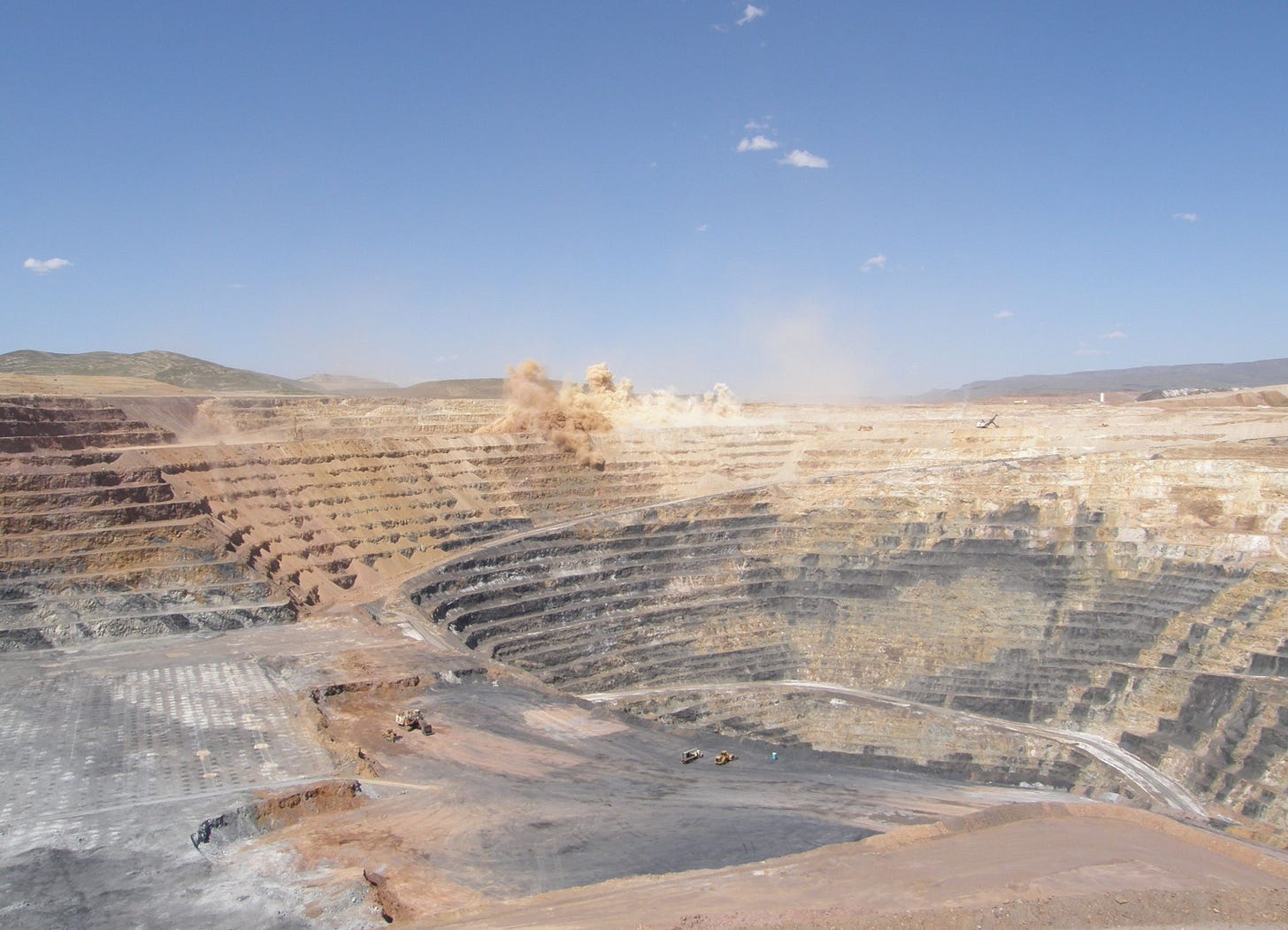
As Lithium extraction causes surface water contamination, it also destroys other water sources. So, it’s also responsible for the creation of toxic rain. The water cycle largely depends on the limited forests. The trees extract underground water and release it into the atmosphere for this process to continue. Therefore, lithium mining hinders the water cycle from providing adequate rainfall in the affected areas. The impacts are severe. The long term result will be increased regional droughts, soil erosion and the risk of desertification.
The entire lithium extraction process contributes to a massive increase in carbon dioxide and other greenhouse gases in the atmosphere. Lithium miners cut down trees and remove all other life forms from their targeted mining areas to eliminate obstructions.
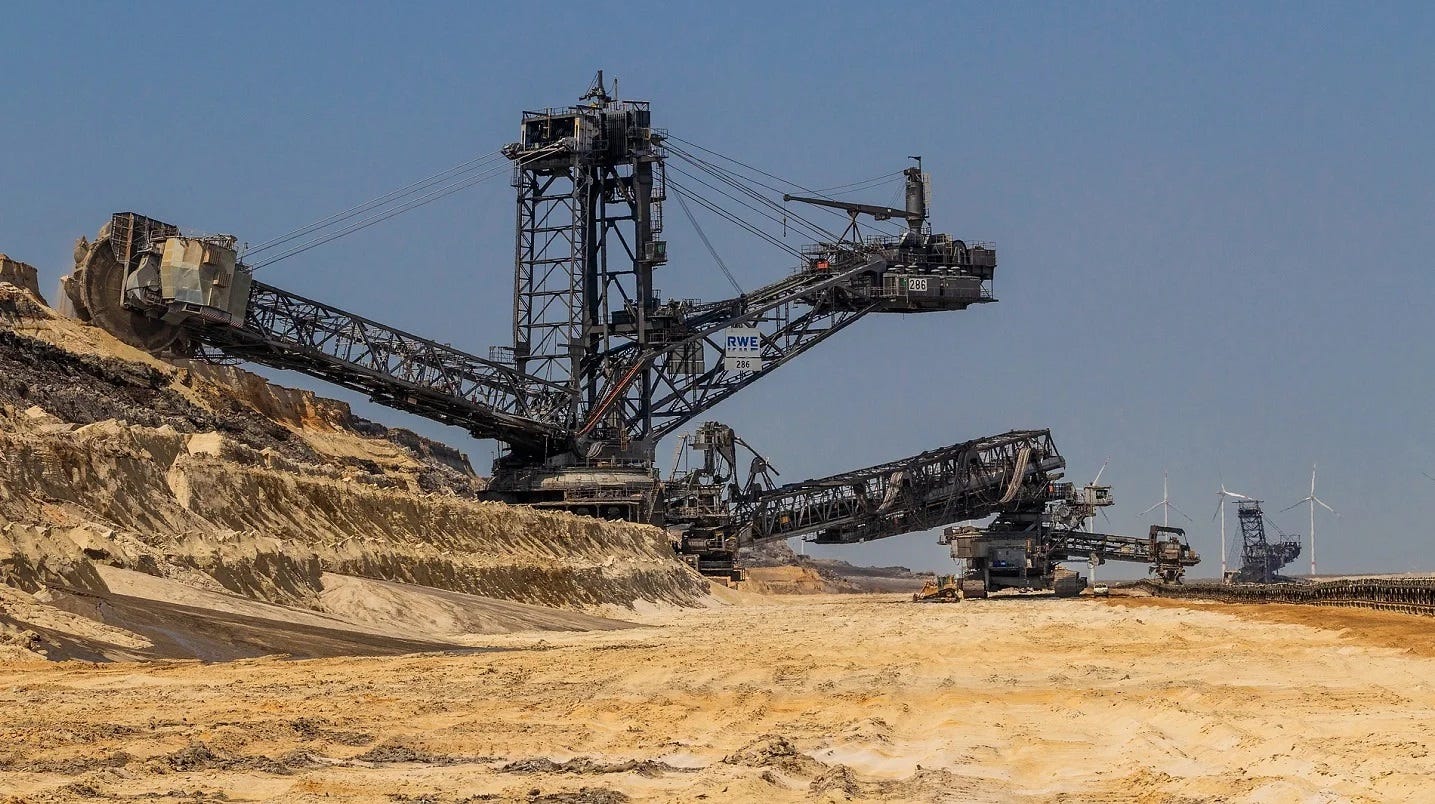
Strip mining and deforestation is not something that can be undone. It means the decimation of ancient diverse ecosystems, the poisoning of the sacred waters and extinction of species and so there is nothing "sustainable", "renewable" or "green" about it.
𝗛𝗲𝗿𝗲 𝗶𝘀 𝗮 𝗹𝗶𝘀𝘁 𝗼𝗳 𝘀𝗼𝗺𝗲 𝗼𝗳 𝘁𝗵𝗲 𝗛𝗮𝗿𝗱 𝗥𝗼𝗰𝗸 𝗟𝗶𝘁𝗵𝗶𝘂𝗺 𝗠𝗶𝗻𝗲𝘀 𝘁𝗵𝗮𝘁 𝗮𝗿𝗲 𝗽𝗹𝗮𝗻𝗻𝗲𝗱 𝘁𝗼 𝗯𝗲 𝗰𝗮𝗿𝘃𝗲𝗱 𝗶𝗻𝘁𝗼 𝘁𝗵𝗲 𝗕𝗼𝗿𝗲𝗮𝗹 𝗙𝗼𝗿𝗲𝘀𝘁 𝘀𝘁𝗮𝗿𝘁𝗶𝗻𝗴 𝗶𝗻 𝟮𝟬𝟮𝟯:
I included pictures showing what the intact primary Boreal Forest they intend to destroy looks like now in the specific regions that have been purchased by the lithium mining corporations.
1 - Ultra Lithium - intends to destroy 2,416+ hectares of land around Forgan Lake and Georgia Lake (near Thunder Bay, Ontario).
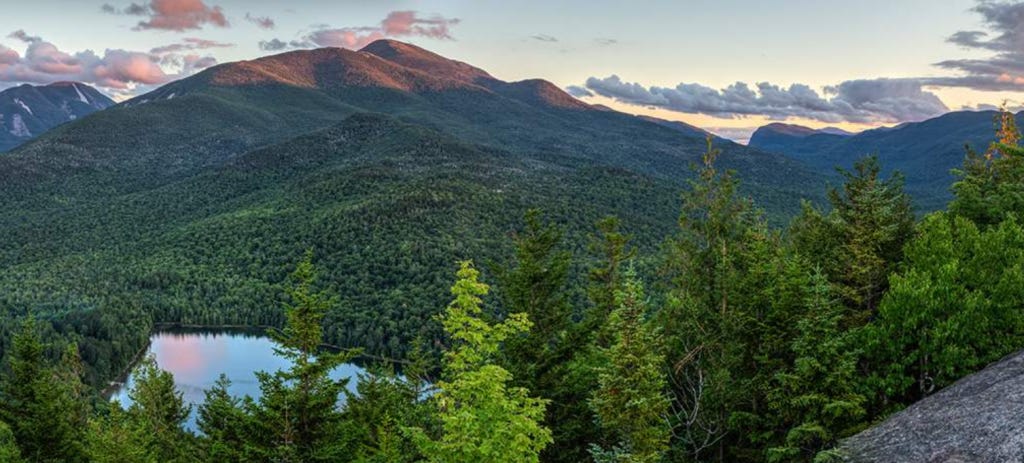
2 - International lithium corporation - intends to destroy 47,700 hectares (477 square kilometers) of boreal forest around Raleigh Lake (located near Ignace, Ontario)
3 - Fairservice Lithium - intends to destroy 2,544 hectares of boreal forest around Mavis Lake, Ontario
4 - Peggy Group - intends to destroy 7,386 hectares of boreal forest located about 80km north of Sioux Lookout, in the province of Ontario.
5 - Rock Edge - intends to destroy 6378 hectares of boreal forest (in their combined "Maun" and "Terrier" properties) between the East Wabigoon and English River, in Ontario.
6 - The Hearst Project - intends to destroy 29,805 hectares of land located roughly 15 kilometers south of Hearst, Ontario.
7 - Frontier Lithium’s PAK Project (involving Green Technology Metals corporation)- intends to destroy 67,800 hectares of boreal forest near Red Lake (with two subsidiary projects called "Seymour" and "Root").
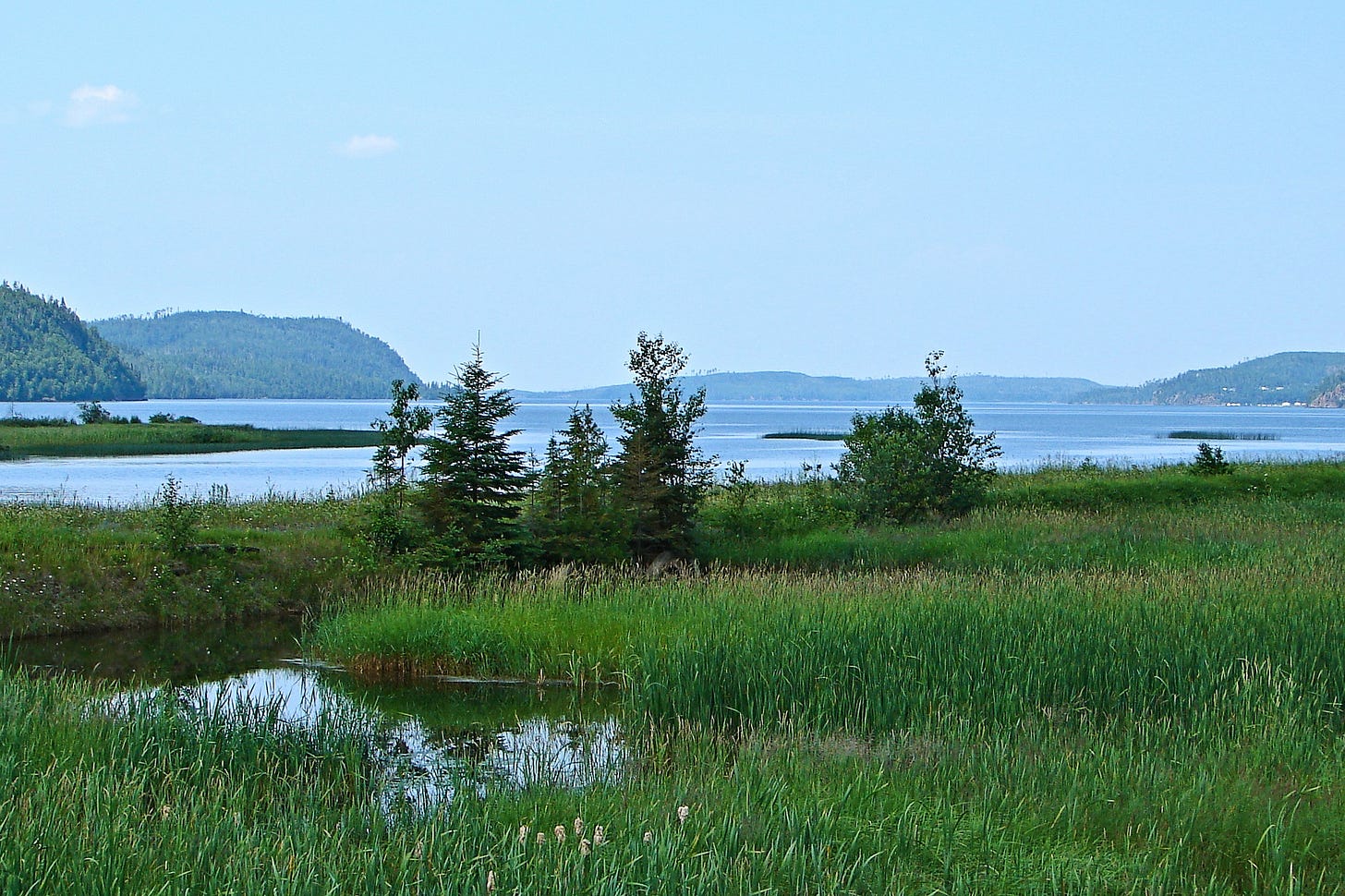
8 - Vancouver’s "Lithium One Metals" and Critical Elements Corporation - intend to destroy 53,000+ hectares (530 km2) of boreal forest in Northern Ontario and the James Bay side of Quebec.

-----------------------------------------
This is not a comprehensive list, there are many more mines planned for the areas listed above (and all over Canada in the Boreal Forest zone). I just became emotionally exhausted after spending half a day reading the lithium mining companies press releases where they were bragging about having rights to begin blasting the land to pieces soon for profit (and bragging about having paid off the locals and having made them sign binding contracts so they cannot complain about environmental/health damages in future years).
The boreal forest is teeming with life (containing about two thirds of Canada's 140 000 species of plants, animals, and micro-organisms.) To describe it, let's begin with the trees that make up the forest canopy. There are about 20 species of them (including but not limited to Spruce, fir, pine, and tamarack, trembling aspen, balsam poplar, birch and more). The boreal plays a critical role in how the planet breathes through the process of photosynthesis. By extension, it also shapes the composition of the atmosphere, which today includes maintaining 21 percent of the life supporting concentrations of oxygen in our atmosphere. The impact of the forest is so significant that global levels of carbon dioxide, actually drop significantly in spring and summer when it is growing most.
For those concerned about carbon levels in the atmosphere, preserving the integrity of the Boreal Forest should be a top priority. The boreal forest soaks up more carbon than it emits. The boreal is also cold. Thus, when trees die, they decompose slowly, keeping carbon in their bodies relatively longer than dead trees in tropical forests, which rot swiftly and release large amounts of carbon. The cold also keeps the boreal’s permafrost frozen, trapping carbon-rich methane, underneath the surface of the soil. As well, much of the boreal is dotted with marshy peatland, another efficient storage facility for carbon.
The boreal forest shelters more than 85 species of mammals, including some of the largest and most majestic—wood bison, elk, moose, woodland caribou, grizzly and black bears, and wolves—and smaller species, such as beavers, snowshoe hares, Canada lynx, red squirrels, lemmings, and voles.
Nearly half of the birds in North America rely on the boreal forest at some time during the year. It is estimated that at least 3 billion landbirds, water birds, and shorebirds breed in the boreal forest each year, representing more than 300 species. Another 300 million birds, including several species of shorebirds, swans, and geese, breed farther north and travel through the boreal forest during migration. It is estimated that 32 000 insect species inhabit Canada's boreal forest, although about one third of these species have yet to be described. Canada's boreal forest is home to about 130 species of fish (including minnows, stickleback and Larger species such as including walleye, northern pike, lake trout, Arctic grayling, yellow perch, brook trout, whitefish and burbot).
It is worth re-iterating that Hard rock lithium mining involves deforestation, draining lakes and rivers, blowing the land into pieces with explosives, carving deep gashes into the Earth with giant machines, using truckloads of industrial solvents like sulfuric acid (resulting in water contamination with toxic sludge) dragging that processed rubble to processing facilities with fleets of heavy machinery then processing the ore with extremely high energy demanding furnaces using another slew of toxic chemicals (which further contaminate the water table, lakes, rivers and ocean elsewhere).
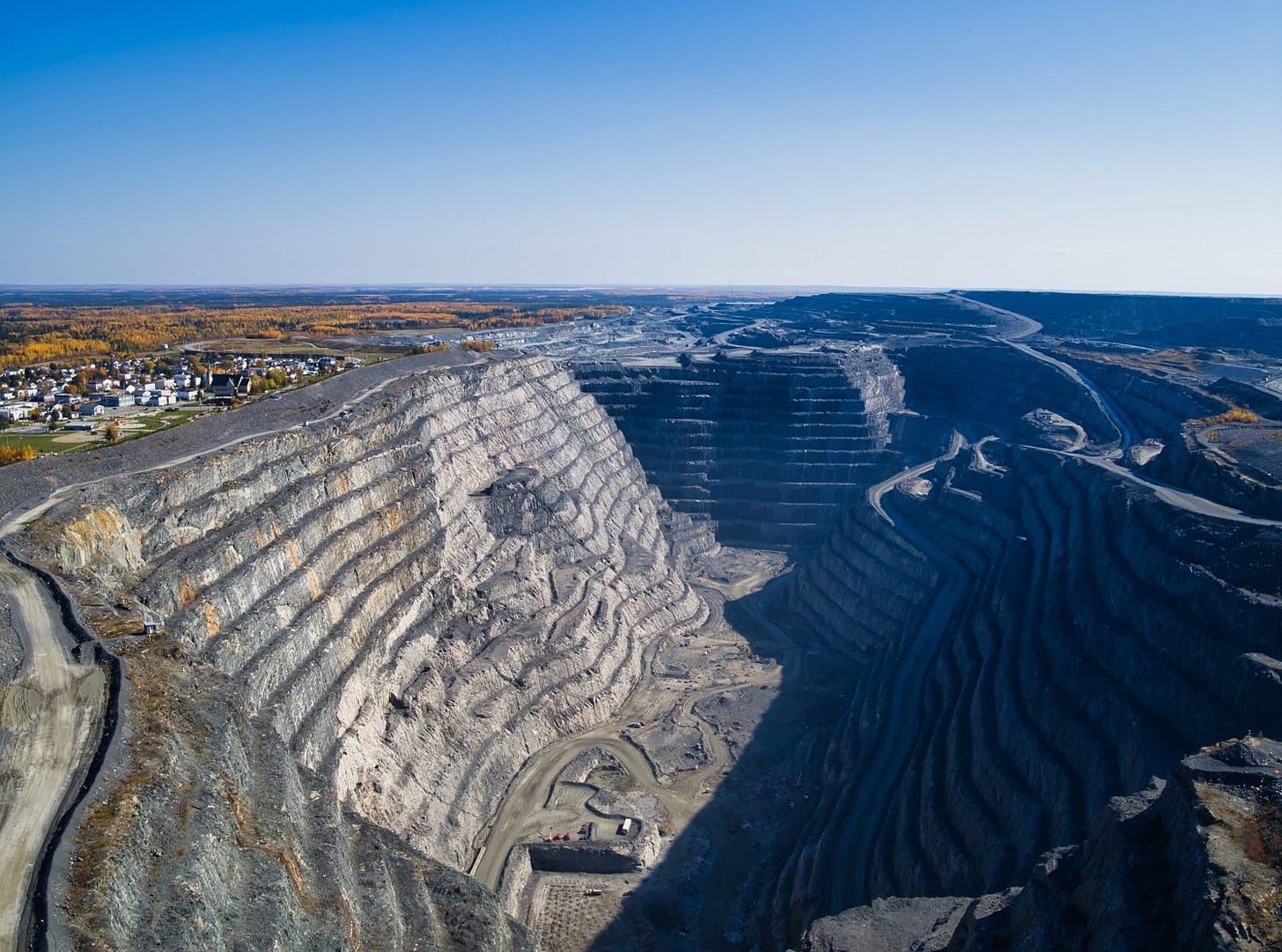
In order to illustrate the potential for catastrophic harm to ecosystems and human health that these mines pose I present a cautionary tale: The Liqi River was once full of fish: Almost none are left. Chemical spills from the Ganzizhou Rongda lithium mine have killed many. “The whole river stank, and it was full of dead yaks and dead fish,” said one villager.: “Masses” of dead fish covered the river.
The people got the mine shut down three times, only to have the government reopen it. One of the elders said, “Old people, we see the mines and we cry. What are the future generations going to do? How are they going to survive?”A local activist surveyed people in the area. Even if mining companies split the profits and promised to repair the land after the mines are exhausted, the Tibetans wanted no part of it. “God is in the mountains and the rivers, these are the places that spirits live,” he explained.” “sustainable development” technology (Lithium battery tech) offers everything: every luxury, every whim, available at the touch of a ‘carbon-free’ button. But the world that these technologies provide will be a rotting, desecrated, and, finally, dead world if we let them continue on their crusade to turn the living world into dead things, for profit and to perpetuate our obscene technologically addicted human “civilization”.
In the concentrations extracted via industrial mining operations, lithium is harmful to living beings. It interferes with sperm viability, causes birth defects, memory problems, kidney failure, movement disorders, and so on.
There’s no circumventing the fact that these energy-storage technologies are fundamentally destructive. And they're dependent on a global supply chain and advanced manufacturing technologies that, themselves, are fundamentally destructive. Machines making machines making machines; and while more and more hyperbolic "green" headlines are written, the planet is being killed.
As described above, our corrupt corporation captured government is helping to initiate large projects to pillage the lands of indigenous peoples (Cree of Eeyou Istchee, the Shakopaatikoong peoples of the Slate Falls first nation and the Waabitigweyaang peoples of Sandy Lake, among others ) and the body of Mother Earth in new Lithium (cobalt and tantalum) mines in northern Ontario and Quebec.
Given the nature of open pit mining, lithium leeching ponds and lithium refining, the inevitable result will be large scale poisoning of the water table and the ocean in James bay, contamination of the great lakes (through lake Superior, moving downstream into all the other great lakes), deforestation and genocide of local wildlife.
These corporations intend to clear cut the boreal forest, annihilating the little bit of remaining habitat that exists in Ontario for the moose, caribou, the lynx, bears, the mountain lion, wolves, fox, bobcats, eagles, hawks and countless other winged and four legged beings will be forcibly displaced from their homes (inevitably resulting in many of them attempting to return to their homes only to starve while pacing near the fences or to be poisoned by the toxins these mines produce).
The fish in the lakes, the whales and countless other beings in James bay, they will all be decimated by these projects.
Clearcutting disturbs soils, wetlands, and peatlands, releasing their vast carbon stores, and diminishes the boreal forest’s ability to sequester carbon from the atmosphere. As such, it is often an ecologically harmful form of logging. Nonetheless, it is the dominant logging practice across the region; and on average, 1 million acres of boreal forest are clearcut each year. And over the last 20 years, an area totaling more than 28 million acres has been clearcut, nearly the size of Ohio.
Canada’s boreal forest—is home to at least 600 Indigenous communities, the forest and its species have been integral to myriad Indigenous cultures for millennia.
Approximately 41 percent of the primarily-treed boreal has already witnessed anthropogenic damage and around 23 percent of the boreal overall has been destroyed. More than 30 percent of Canada’s remaining boreal forest has been slated for industrial development (another word for decimation and transforming that which is living, into dead products, for profit).
Clearcut logging is significantly impacting the region. Indigenous Peoples’ traditional territories are under threat, with many degraded beyond recognition as industrial activity creeps north.
These corporations appear to be moving in fast and as quiet as possible (paying off locals with bribes along the way and getting them to sign binding agreements) to avoid local and environmentalist resistance.
These projects will mean we trade blood for lithium so we can have fun i-pads and electric cars to play with. We will be trading the ancient beauty and majesty of the Boreal forest and all it's inhabitants for smart phones and tesla cars. I can't help but ask myself this question... Is it really worth it?
They are killing our elders, FOR PROFIT. Please stand with our brothers and sisters that are fighting to protest the sacred ancient forests before it is too late.
When your grandchildren see images of the towering, wise and majestic trees that once were, and ask you what you were doing when they cut down the last old growth trees what will you tell them?
In closing I would like to share some excerpts from a Charles Eisenstein essay which shines light onto the imperative of remembering (and embracing) the aminate worldview which was once central in the lives and ways of our ancestors.
Reading some parts of this essay brought tears to my eyes, for Charles seems to have distilled down the same spirit, perspective and message I have tried to express in some of my essays and in my book into a very poignant, cogent and concise format.
He expressed many of the same things I have been trying to express, but with such illuminating clarity that I think reading the words can serve to shine a light deep into the soul, inviting the reader to remember where our love and reverence for our Great Mother lives.
“..do we really need to produce more and more energy forever? Does it really contribute to human well-being? Bigger houses, more weapons, more stuff, the whole developmentalist technological program that separates us ever-further from life and matter… what does it serve? Ultimately, the “solution” to the ecological crisis is not technical. It comes from reclaiming basic values and changing our relationship to nature.
Commenting on the clearing of forests to build solar arrays, Tellamy wrote, “It’s totally antithetical to the goals of conservation.” Yes. The environmental movement needs to return to its roots. Conservation does not mean to “use more slowly” or to “save for later.” What the word really means is to serve with. To serve together. To serve what? To serve life.
It is a rhetorical error to frame environmentalism in any other way than to make it about love of nature, love of life. No one becomes an environmentalist because of all the money they will save. No one calculates their way into love. And the changes that we will need to make to restore earth’s aliveness from its current depletion will require a degree of courage and sacrifice that comes only from love. We will not be coerced or bribed into them.
A veteran activist once told me of a meeting he attended in the 1980s in which a group of leading environmentalists decided to adopt the term “sustainability” into their core lexicon. “We wanted to sound scientific,” he said. “We didn’t want to use words like ‘love’ or ‘precious’ and be dismissed as tree-huggers. We wanted to give people a rational, hard-headed reason why we should protect nature. We thought that appealing to the beauty and sacredness of nature wouldn’t reach the people who were destroying it, so we tried to make it about their self-interest instead.”
Around the same time, global warming entered the awareness of the environmental movement, growing over the years to become its defining issue. At first, global warming (now called climate change) seemed a boon to the movement. Now we would be able to force corporations and governments to do the things we’d always wanted, appealing not just to sentiments about nature’s magnificence, and not just to concerns over the health of some subset of people downwind, but to the survival of civilization itself. One no longer need be a nature lover to support the aims of environmentalism.
Let that last statement sink in. One no longer need be a nature lover to support the aims of environmentalism.
The result is that environmentalism has been hijacked by people and institutions who are not nature-lovers. We see where it leads: nature dies in the service of “sustainability.” Forests are cut for solar farms. Landscapes are sacrificed to pit mines to extract lithium, cobalt, silver, rare earths, etc. for decarbonization. ..There is an awful lot of money in the sustainability industry. It is the same story as before. Meanwhile, we neglect the priorities that are highest from the Living Earth perspective.
All is not lost. There is in fact a way to “save the world.” I put it in quotes, because ultimately the choice we face is not about our survival, it is about what kind of world we choose to live in. One vibrant with life? Or a gigantic strip mine / waste dump / parking lot? So let us say instead, there is a way to regenerate a world vibrant with life. The way is to enact a reverence for life in all its forms. This translates to three priorities for environmentalist attention and funding.
The first recalls traditional conservationism. We must absolutely protect any remaining intact ecosystems from development, whether it is for oil & gas, minerals, lumber, ranching, suburbs, dam reservoirs, industrial-scale fishing, or biofuels. The few remaining intact organs of Gaia are its reservoirs of biodiversity and its memory of health. Note well that to “protect” does not usually mean to fence off and keep humans away. In fact, right human participation can enhance the health of ecosystems when those humans have intimate understanding and reverence for the places where they live.
𝗜 𝗱𝗼 𝗻𝗼𝘁 𝘄𝗼𝗿𝗿𝘆 𝘁𝗵𝗮𝘁 𝗼𝘂𝗿 𝘀𝘆𝘀𝘁𝗲𝗺 𝗶𝘀 𝗻𝗼𝘁 𝘀𝘂𝘀𝘁𝗮𝗶𝗻𝗮𝗯𝗹𝗲. 𝗜 𝘄𝗼𝗿𝗿𝘆 𝘁𝗵𝗮𝘁 𝗶𝘁 𝗶𝘀. I am afraid that we can continue to lay waste to the living earth, indefinitely, ending up on a concrete world, so chronically ill physically and mentally that we must incorporate technological assistance into our very brains and bodies. I am afraid we will compensate for the lost connection to a living world with a burgeoning array of virtual substitutes, digital realities, and online adventures, tragically seeking something that we come to forget we ever had. Do you remember how loud the frogs were? Do you remember flocks of birds extending from horizon to horizon? Do you remember the clouds of fireflies that lit up the nights of my father’s youth? I am afraid we will forget we ever lived in such wealth and make do instead with Mario Cart. We are already far down this path to a concrete world, and far down the path of learning to cope with it. We are already far down this path to a concrete world, and far down the path of learning to cope with it. American doctors write every year around 120 million prescriptions for SSRIs, 118 million prescriptions for Adderall, Ritalin, and other ADHD medications, and 120 million for benzodiazepines. That’s more than one psychiatric drug prescription per capita! No wonder people have never been happier.
The ecological crisis and the spiritual crisis that we call “mental health” share a common source: denial of earth as a living being, worthy of love, worthy of service.”
The above excerpt is from :
Here are some organizations, films and lawsuits working to stop the pillaging:
Old-growth in BC:
Ancient Forest Alliance:
Behind the Thin Blue Line: Meet a secretive arm of the RCMP in B.C
https://www.aptnnews.ca/ourstories/cirg/
Stand Earth - Take a stand for old-growth forests: https://act.stand.earth/page/19709/action/1?locale=en-US&fbclid=IwAR0iX-gYqVHW9yxu-_hfOQ5TeY1fr42WEgnzgDsSRh3xuguOcu6KEPmeVDc
Before They Fall (Film) :
Deforestation Inc: https://www.icij.org/investigations/deforestation-inc/?utm_source=burnaby%20now&utm_campaign=burnaby%20now%3A%20outbound&utm_medium=referral
Fairy Creek: The Last Stand (Documentary Film):
More Info and pertinent news:
https://www.greenpeace.org/canada/en/act/end-the-rain-of-death/
https://www.greenpeace.org/canada/en/act/defend-old-growth-forests/
RCMP Misconduct at Fairy Creek: https://www.branchmacmaster.com/class_actions/rcmp-misconduct-at-fairy-creek/?fbclid=IwAR00LiRHM_yvhQSpb_d-10qDyXxjIUgZHVSL9uhYMimsIv8wyKvZAOkuGPg
Update December, 2024
After a over a century of extractive colonialism, imported anthropocentrism and capitalism fanning the flames of corporate abuse and environmental degradation, the movement to save the last stands of old-growth forests in British Columbia is growing exponentially.
In August of 2020, land defenders and a Pacheedaht Elder, Bill Jones, caught word that Teal Jones would begin building roads and logging ancient forests in the pristine Ada’itsx Fairy Creek watershed in a remote part of southwest Vancouver Island, where some trees are up to a thousand years old. Galvanized by the dire threats these endangered ecosystems face, activists began the Ada’itsx Fairy Creek Blockades, calling themselves the Rainforest Flying Squad.
Indigenous Peoples have stewarded ancient forests since time immemorial; their culture, language, and identity are inextricably bound to these ancient giants. As Elder Bill Jones told the Watershed Sentinel, “The fact that they’re the last of the old growth – all the last of our spiritual freedom that we have in this world.”
The forest protectors held the line for over a year, in what became the largest civil disobedience movement in Canadian history, Fairy Creek land defenders continued, for months at a time (in harsh weather, being beaten, mased and harassed by thugs with badges) to hold off logging operations that would finish off these ancient trees that predate colonialism and capitalism.
After many arrests of brave forest protectors, after many murdered ancient elders (some over 900 years old) and after much police brutality (with RCMP acting as corporate mercenaries) they finally got a judge to do an injunction (an order to temporarily stop the logging of the last ancient trees on Vancouver island) putting the profiteering on hold.
Our government in Canada is always saying how "green" and "sustainable" they are, meanwhile, that same government simultaneously supports, subsidizes and profits from clearcut logging of primary forests and endangered old growth stands in Canada.
The forestry regime in Canada follows a fundamentally colonial model, in which forest lands are treated as terra nullius. The assumption is that nature is capital, a resource to be managed and extracted from for society’s perpetual economic benefit. This idea is implicit in Canada’s forestry policy and history, most notably in the policy of “sustained yield”. Sustained yield is based on the concept that old-growth forests are an asset to be converted into tree farm plantations, managed by ‘science’, to yield timber resources in perpetuity. It leads to forest management regimes that involve stripping forests bare, killing their many inhabitants (Ecocide), then replacing them with monocrop tree farms devoid of “competing” vegetation and unable to support the wildlife populations that once called those diverse habitats home. This intensive tree farming system, designed to maximize timber yield, removes the very biodiversity that makes the forests so rich in the first place.
Since there is only 2% of the original (“primary”) old growth temperate rainforest left in BC (which is the only section left in the world that has not been clear cut) you can understand that we have been chopping down very old trees and replanting monocultures of young ones for quite some time now. This means that there are plenty of re-planted (“secondary”) timber forests on Vancouver Island (and all over Canada) to be logged that are not sensitive ancient rare ecosystems or primary forests with the last original trees living in them. The difference is that logging corporations and government entities make significantly more money chopping down the ancient (primary) trees, as opposed to the replanted (secondary) ones.
On June 8th, 2021, the B.C. government accepted a request by the Pacheedaht, Ditidaht and Huu-ay-aht First Nations to defer old-growth logging for two years in the Fairy Creek watershed and Central Walbran areas on southwest Vancouver Island.
In a few short months, the temporary deferral protecting Fairy Creek is scheduled to expire. If this tenuous protection is lifted logging and road building could resume in the headwaters of Fairy Creek.
Logging has been deferred in Fairy Creek since June 2021, and the temporary protection is scheduled to expire on February 21, 2025. The BC provincial government has had over three years to come up with a plan to protect Fairy Creek and so far all they’ve done is kick the can down the road. With millions of dollars available in federal funding it’s hard to imagine what they are waiting for (aside from cashing in on all the taxes and stumpage fees they will get if the rare ancient forest is clearcut).
It’s time for a permanent park or conservancy to protect the Fairy Creek watershed AND the adjacent old growth forest that have been left out of the deferral.
One of the last living memories of the living Planet Earth's expression of the beauty, diversity, wisdom, medicine for the spirit and biodiversity that arises in the form of an ancient temperate rainforest is under threat by corporate profiteering. We are called now to stand up and speak for the trees to help our fellow human beings understand the importance of protecting this ecosystem scale Noa's Ark that is the Fairy Creek Watershed.
The ancient rooted beings of the forest need people like you to share this and speak up.
Since clear cutting forests to set up agricultural monocultutres (in places like Brazil and a long time ago in the place I live now in Southern Ontario) is another factor driving de-forestation, another path we can walk that is life affirming, helps protect wilderness places and honors the sacred value of life is through planting a regenerative garden and taking steps to cultivate Food Forests and Refugia in degraded landscapes.
Each time we save and share seeds (and share the resulting abundance of crops) we are taking steps towards divesting from/boycotting centralized food and monetary systems which are corrupt and do much harm to the Earth and our collective future.
Though even more importantly, seed saving and regenerative gardening is a life affirming act that lends our time and energy we were gifted on this Earth to honor and preserve that which is sacred and ensure that future generations will be able to experience the same gifts we have.
Now is the time for us to give thanks for all that Mother Earth gives to us, to stand up to protect her last remaining intact primary forests and wilderness places and remember that we each came here with our own unique gifts that we can use to reciprocate and provide the medicine this world and her inhabitants need now. Look within to remember your gifts and go forth now to share them with the world.
We can use our voice to speak for the trees, plant regenerative gardens and help ecosystems to regenerate while simultaneously providing food/health sovereignty by creating food forests where we live.
I choose to have faith that many of those who choose a path that is devoted to and grounded in love, perpetual learning, humility, compassion, having the courage to strive to protect those that cannot protect themselves, giving a voice to those that cannot speak for themselves and taking steps to embody that which one would like to see manifest on this world for future generations will be guided through the storm ahead to find a fertile place to plant their seeds for a new way of living to set down roots when the time is right.
We live in a time when a transnational racketeering cartel (and it's myriad subservient institutions/corporations) work tirelessly to influence and entice you into coveting material things, vanity, quick fix high tech solutions and human exceptionalism. Do not allow yourself to be seduced by the fallacy that tells you some external force, individual, institution or technology is going to solve all our problems for us.
In, is the only way out, for it is within that we may re-kindle the spark that we were born with to become a flame and illuminate a path forward that honors the sacredness of all life and embraces the animate worldview.
Each of us can begin to take steps to reconnect our health and well being with the health and well being of our local ecosystems, bioregion and our local community (comprised of both humans and the myriad other beings that call the land home where we live).
This can begin with just taking time to get out into nature and truly give our attention to recognizing the intelligence and spirit of our fellow beings. This can take the form of “forest bathing”, bird watching, flower appreciation or perhaps something as simple as being truly present and hugging a tree. As Johrey Elizabeth Magdolyn astutely and lovingly points out in the article linked below, we have a lot to learn about our elders in the tree kingdom, and perhaps the best way to start is by connecting from the heart, with humility and friendship.
Since clear cutting forests to set up agricultural monocultutres (in places like Brazil and a long time ago in the place I live now in Southern Ontario) is another factor driving de-forestation, another path we can walk that is life affirming, helps protect wilderness places and honors the sacred value of life is through planting a regenerative garden and taking steps to cultivate food forests in degraded landscapes.
Each time we save and share seeds (and share the resulting abundance of crops) we are taking steps towards divesting from/boycotting centralized food and monetary systems which are corrupt and do much harm to the Earth and our collective future.
Though even more importantly, seed saving and regenerative gardening is a life affirming act that lends our time and energy we were gifted on this Earth to honor and preserve that which is sacred and ensure that future generations will be able to experience the same gifts we have.
Now is the time for us to give thanks for all that Mother Earth gives to us, to stand up to protect her last remaining intact primary forests and wilderness places and remember that we each came here with our own unique gifts that we can use to reciprocate and provide the medicine this world and her inhabitants need now. Look within to remember your gifts and go forth now to share them with the world.
We can plant regenerative gardens and help ecosystems to regenerate while simultaneously providing food/health sovereignty by creating food forests where we live.
One of the most powerful choices we can make begins with a handful of seeds and some tlc.


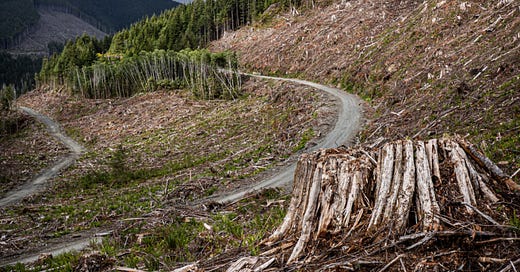


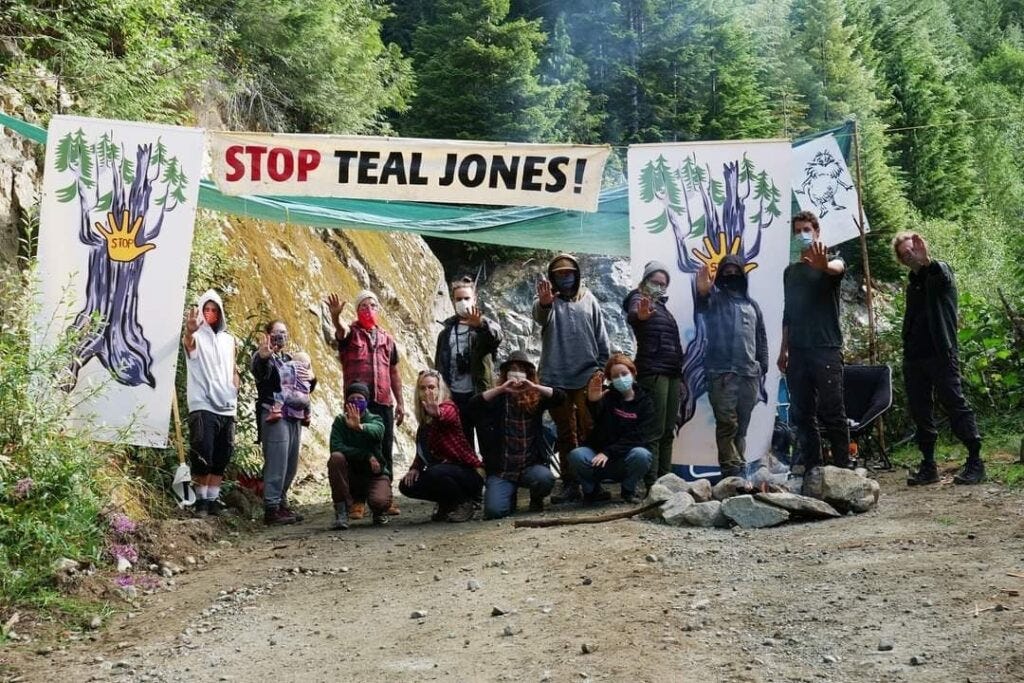
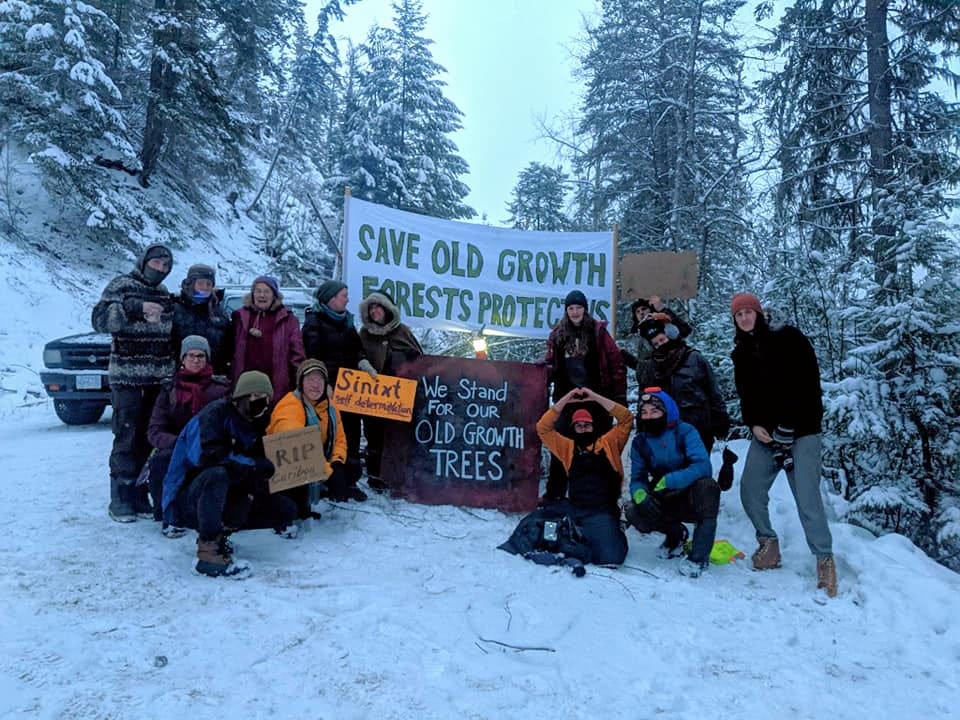

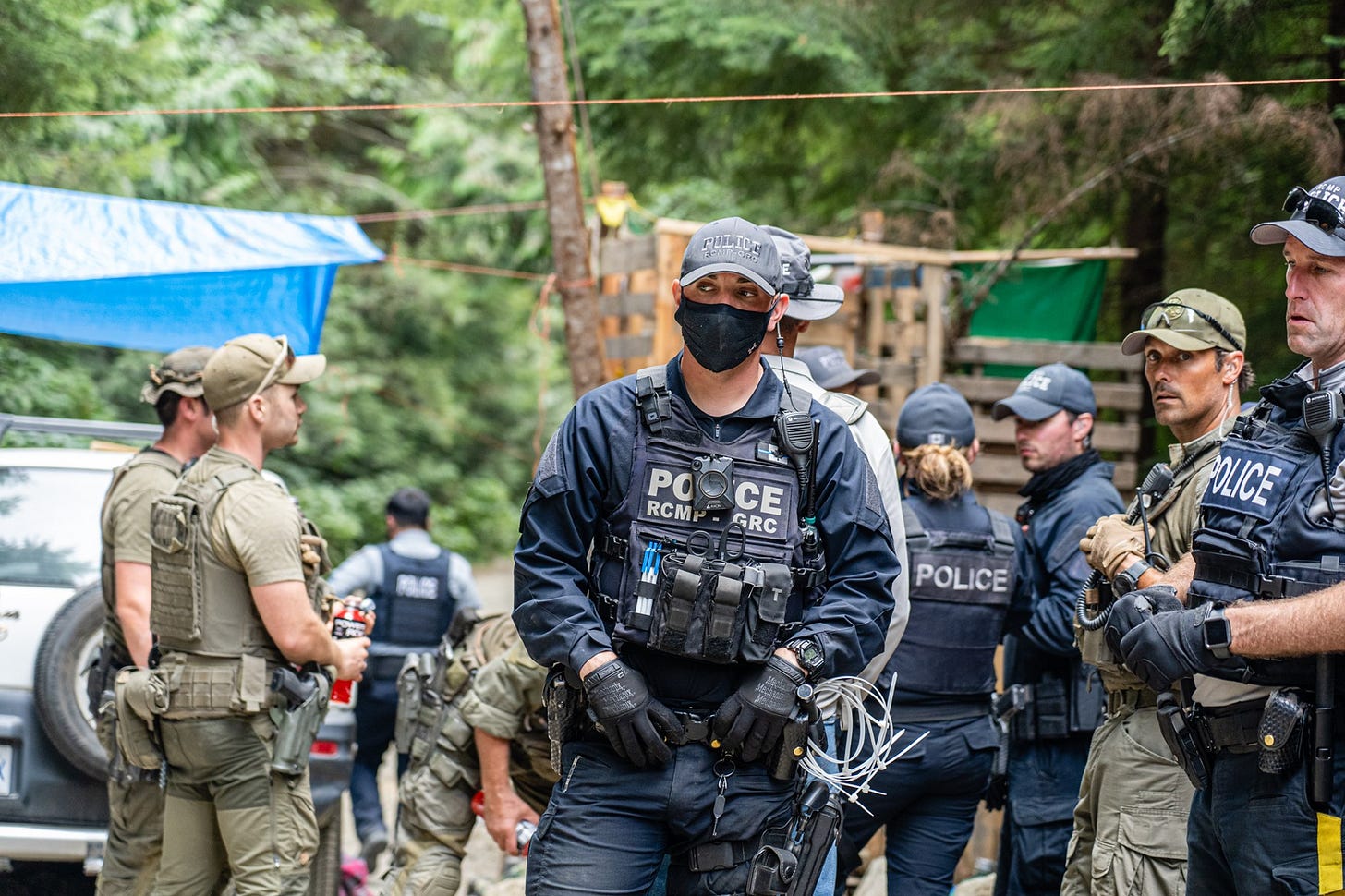
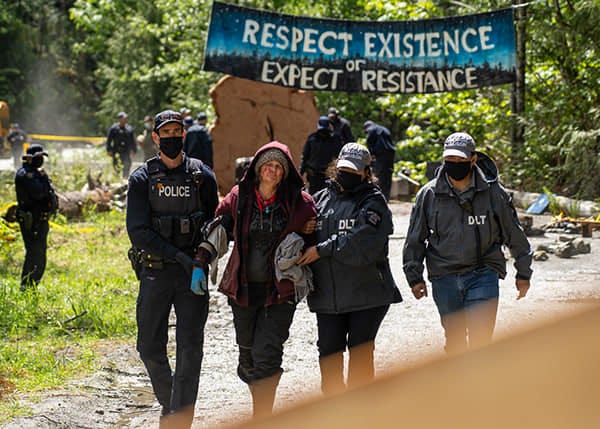



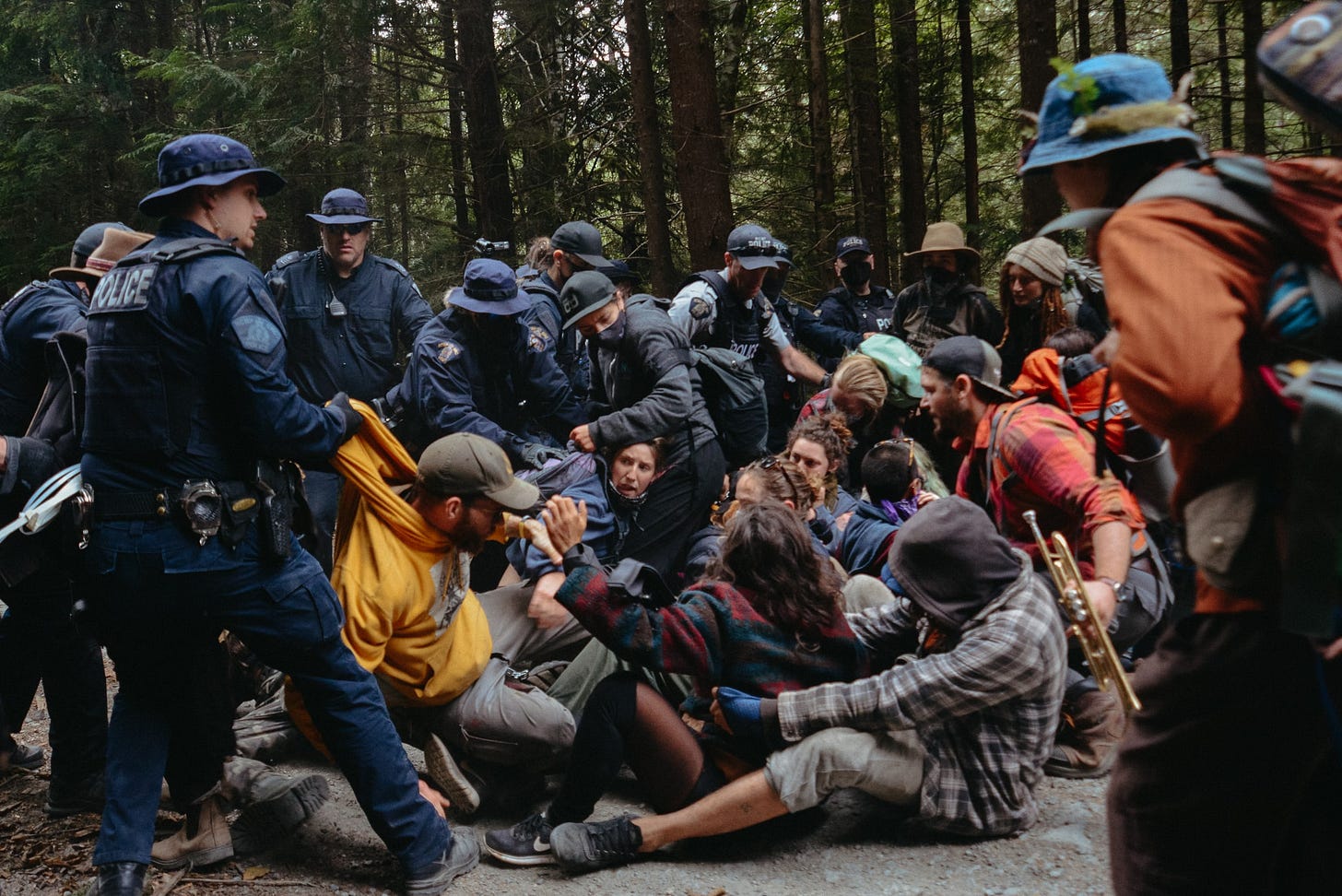
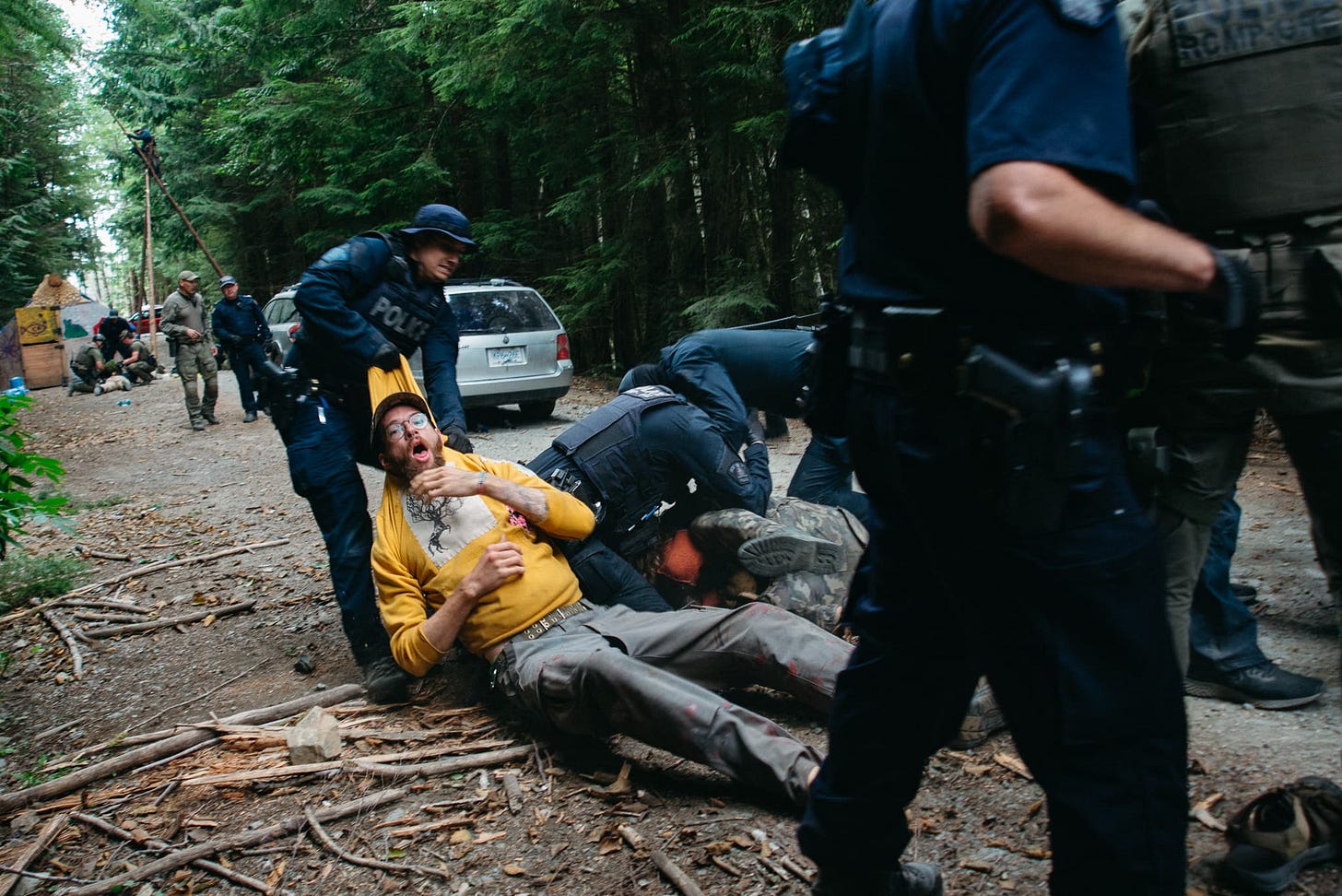
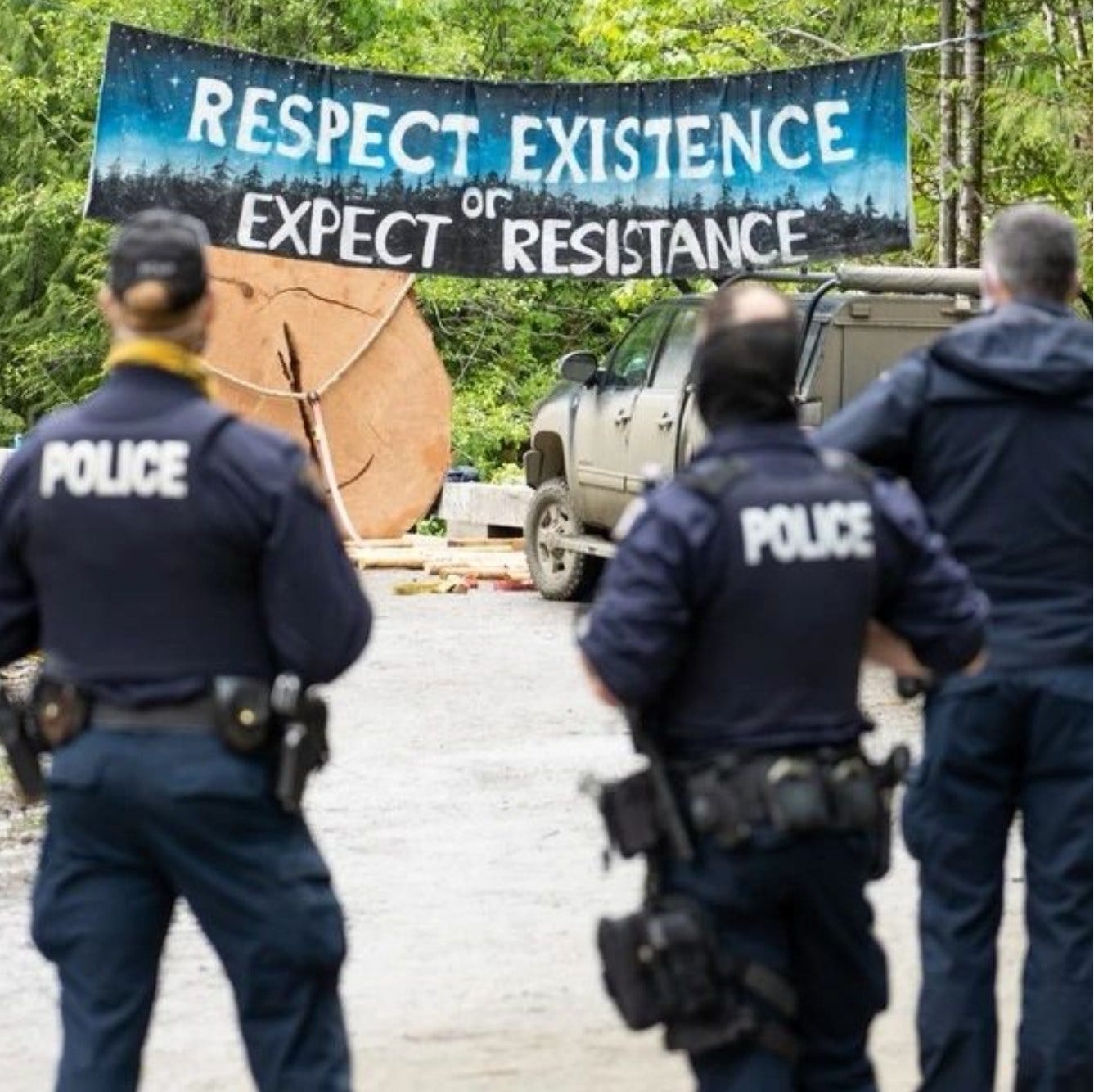
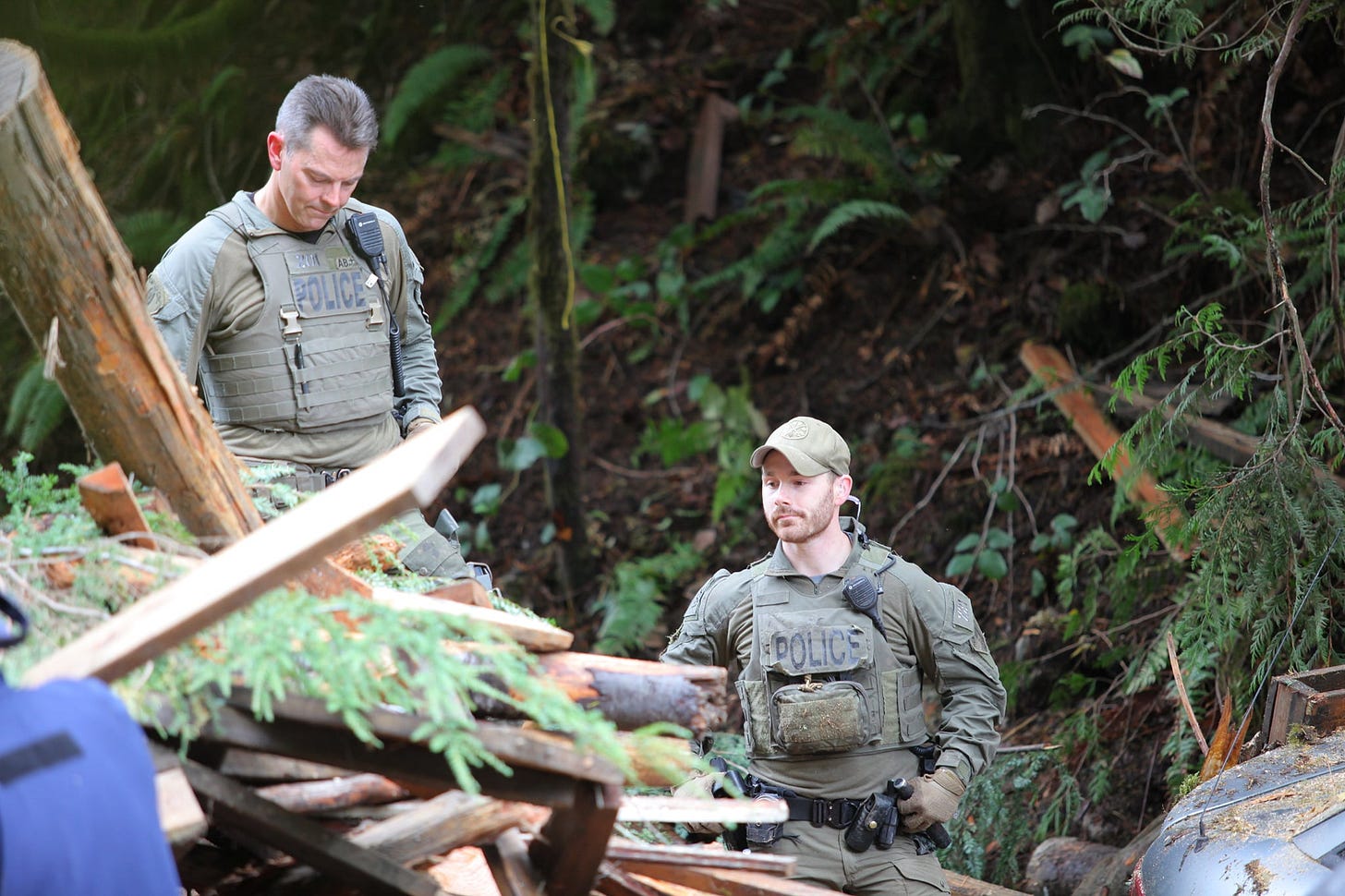
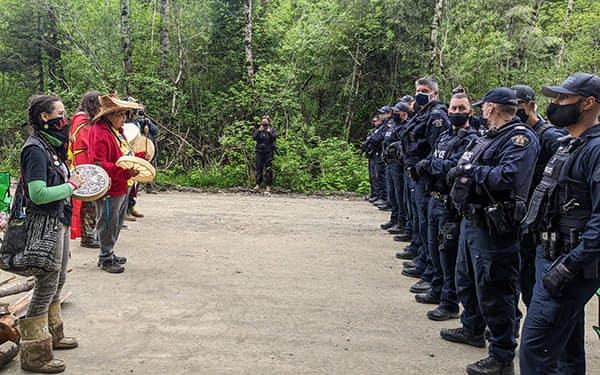

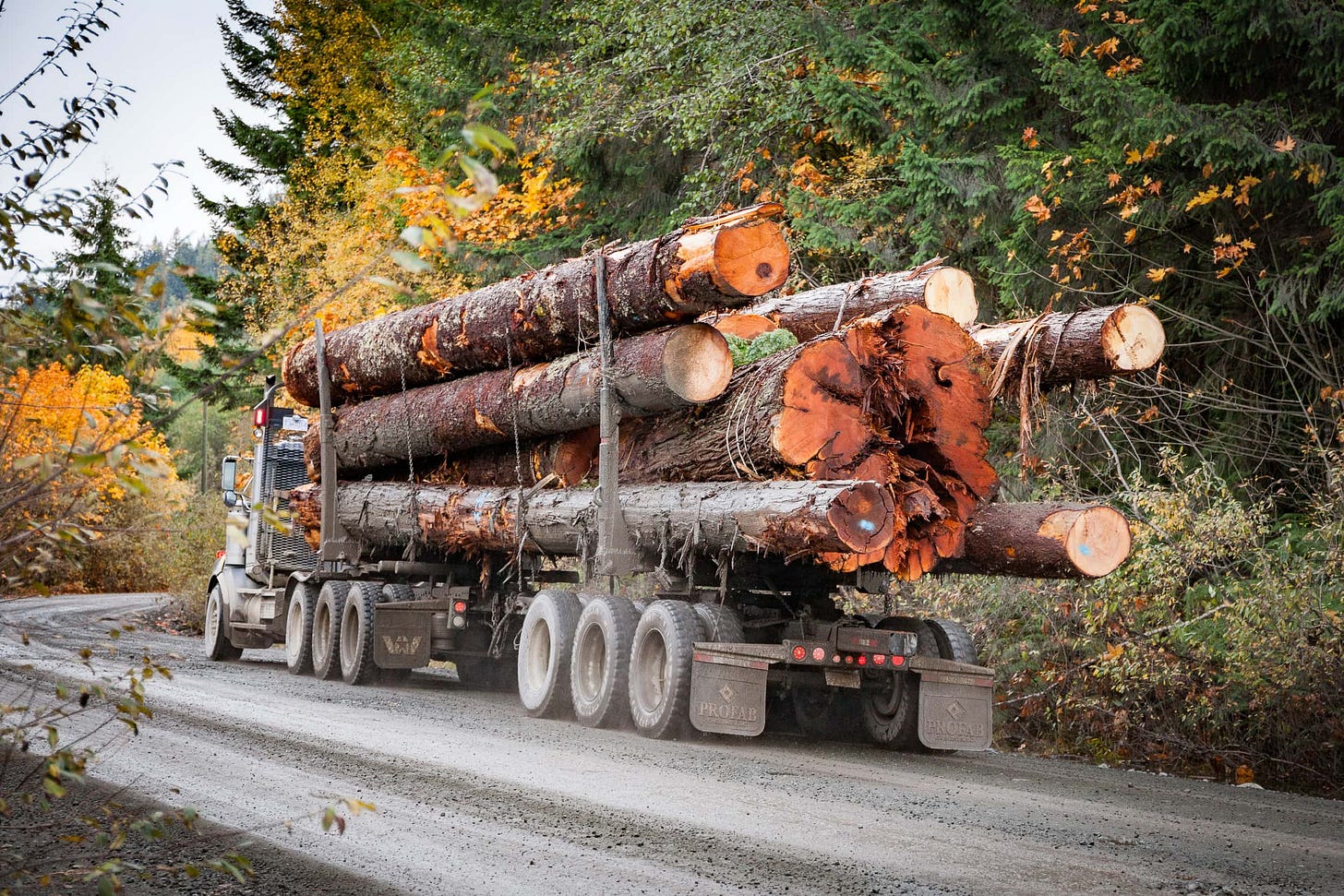
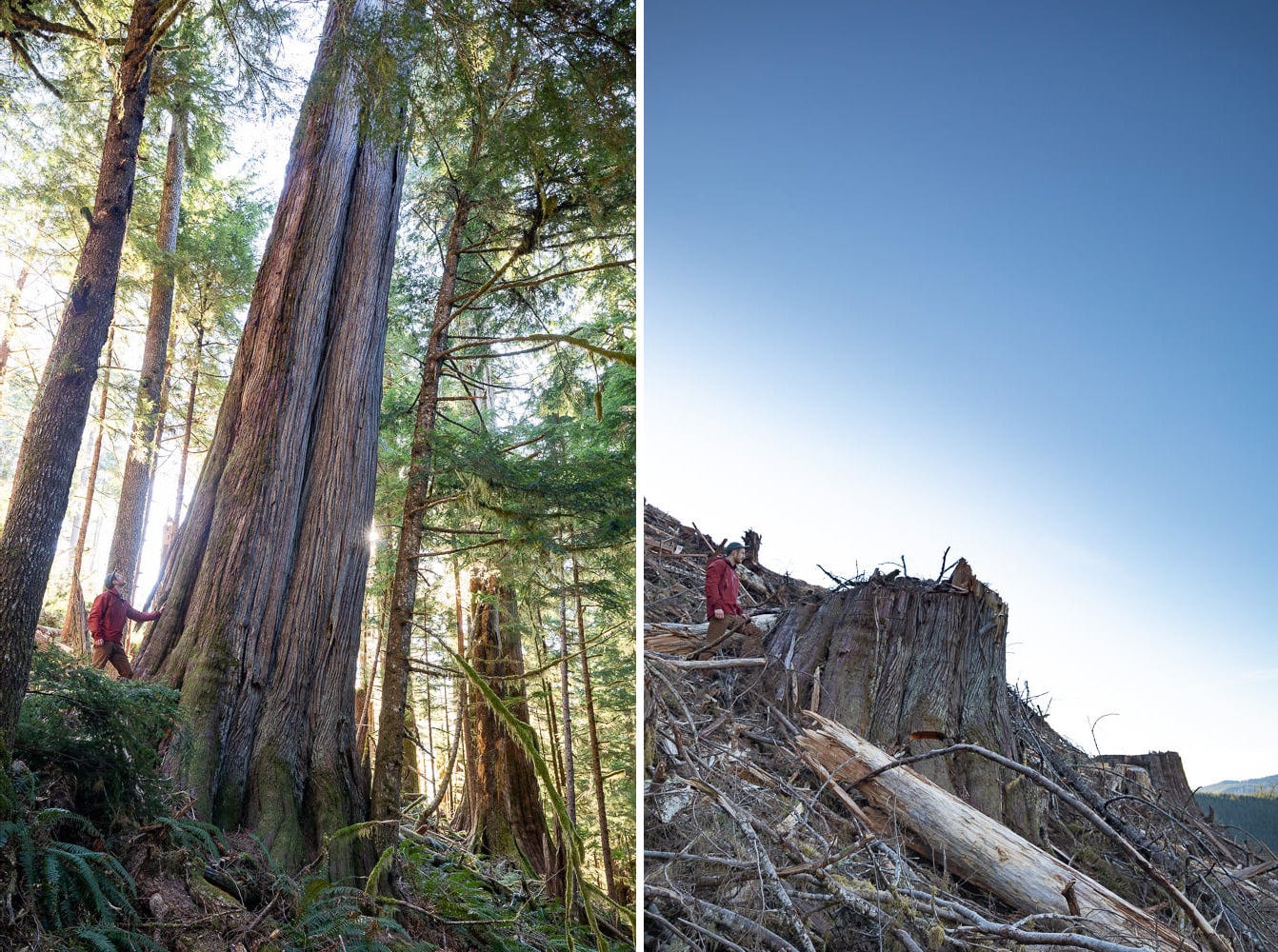


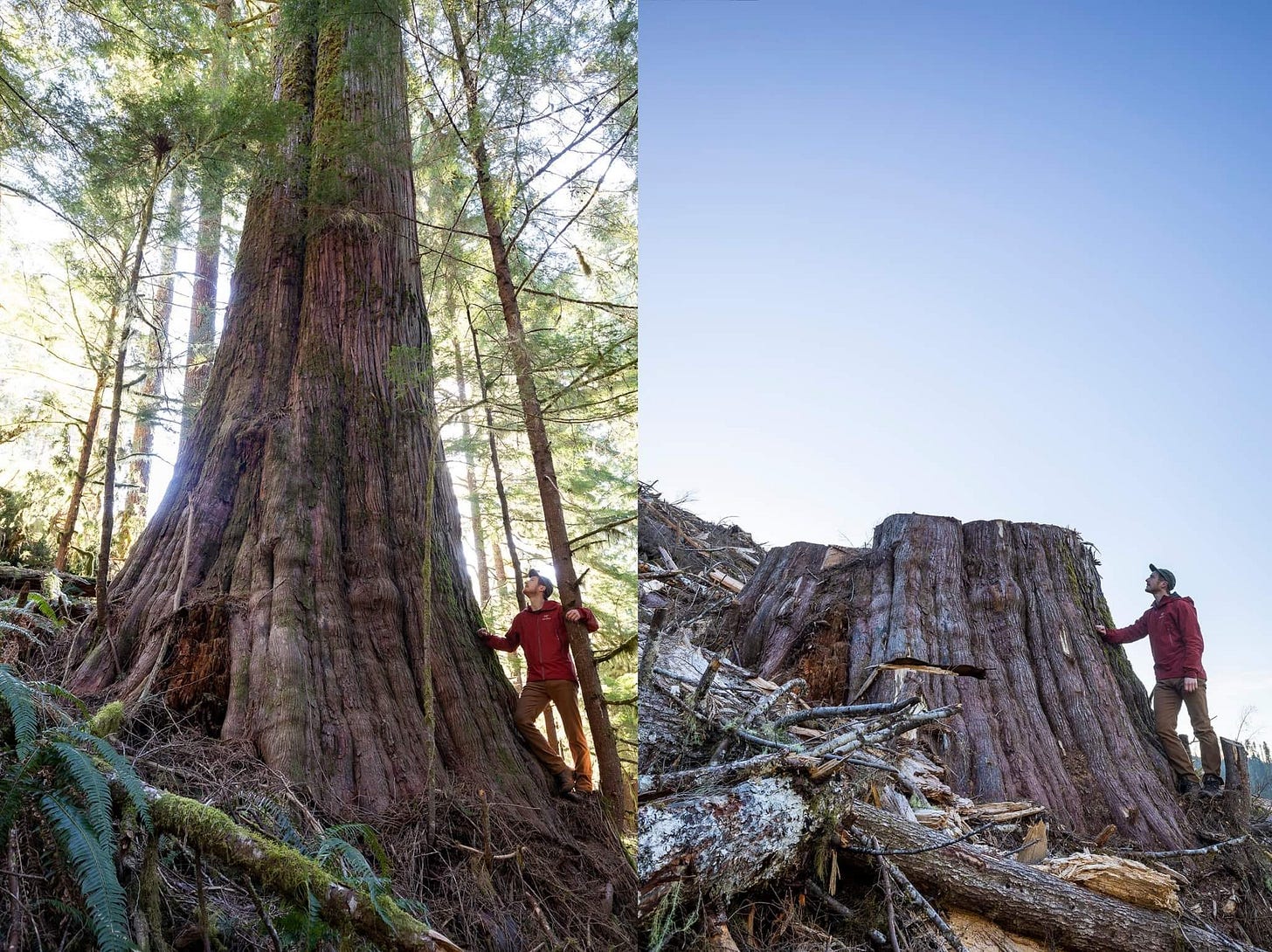

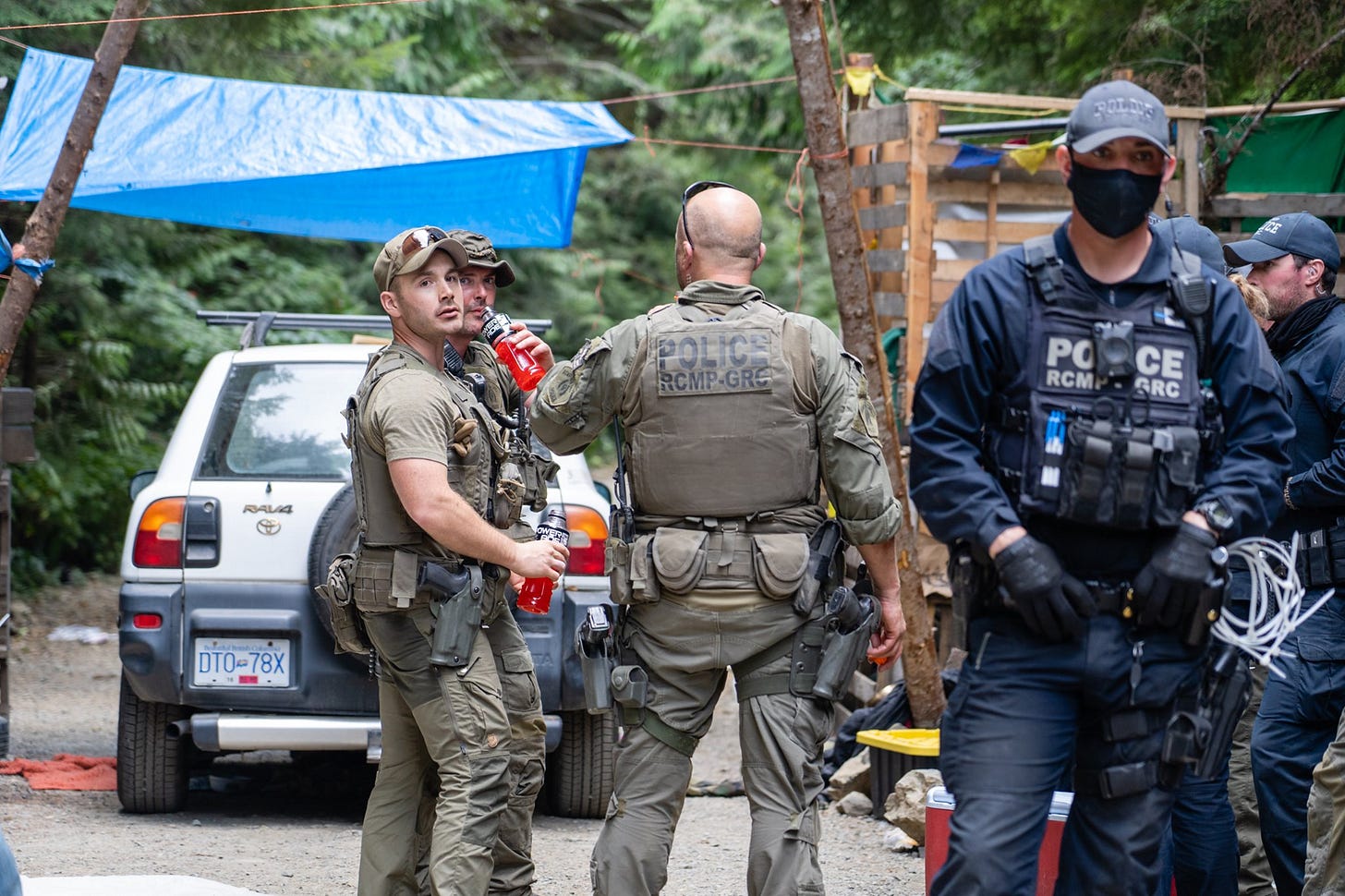

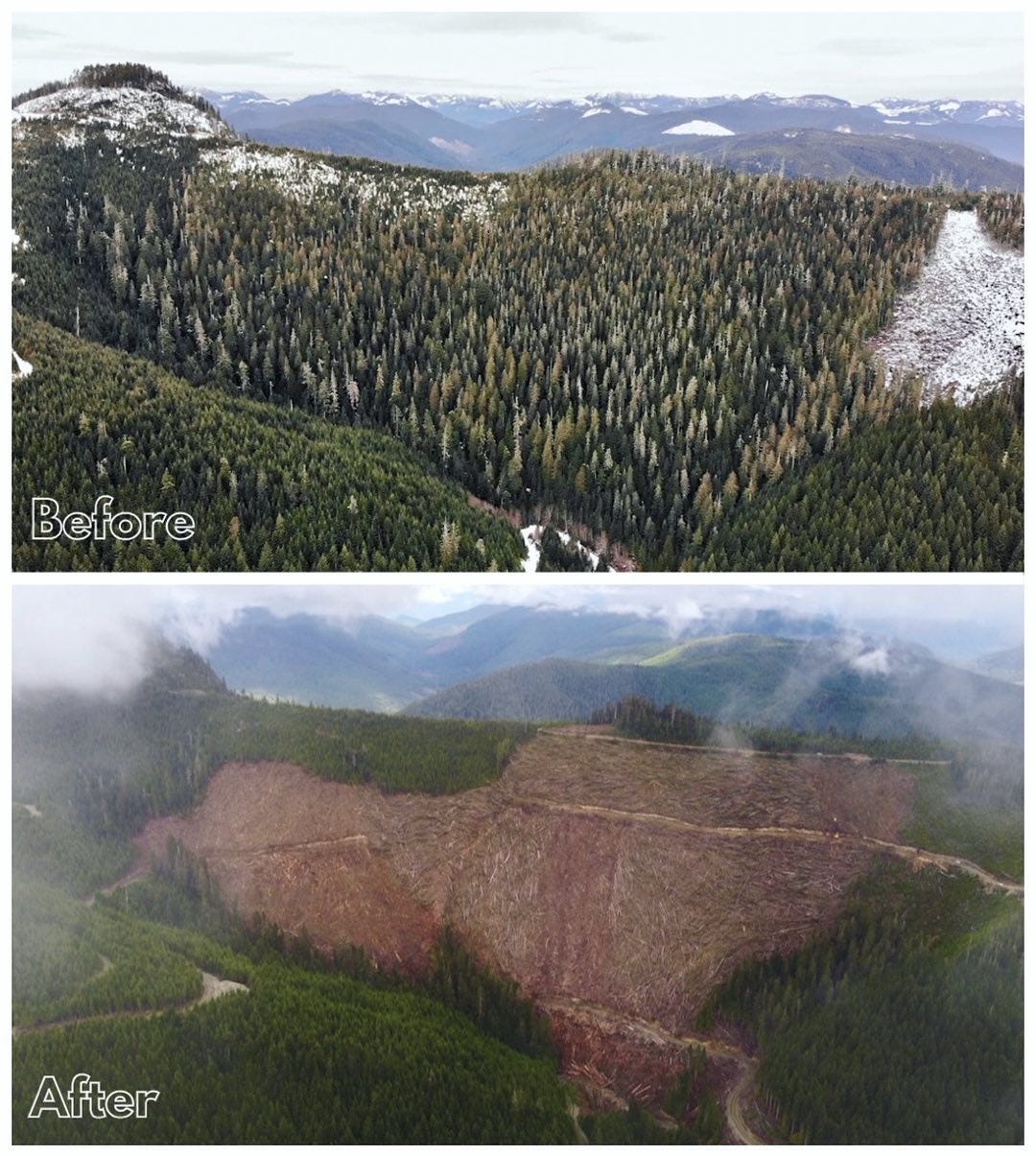
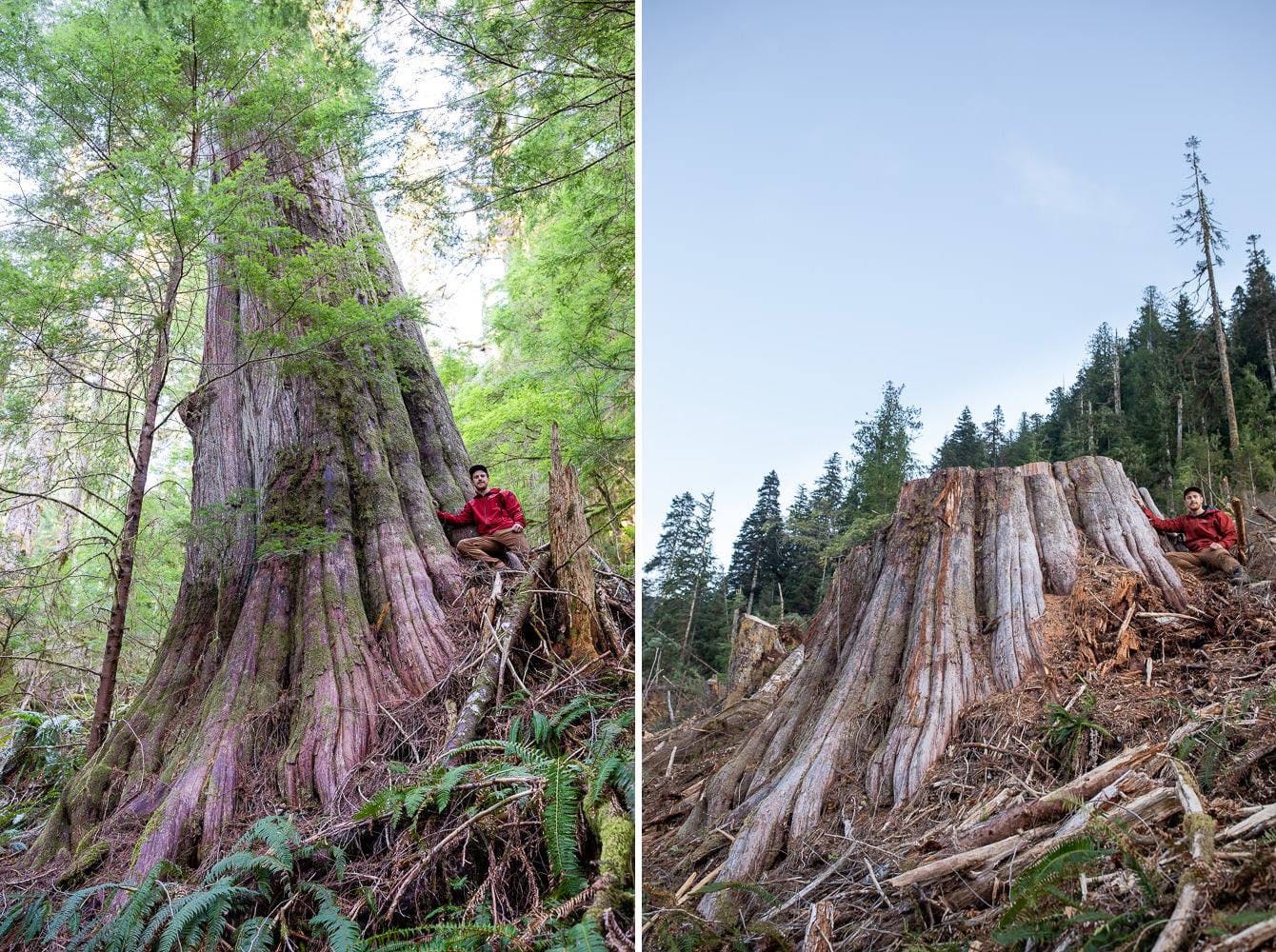
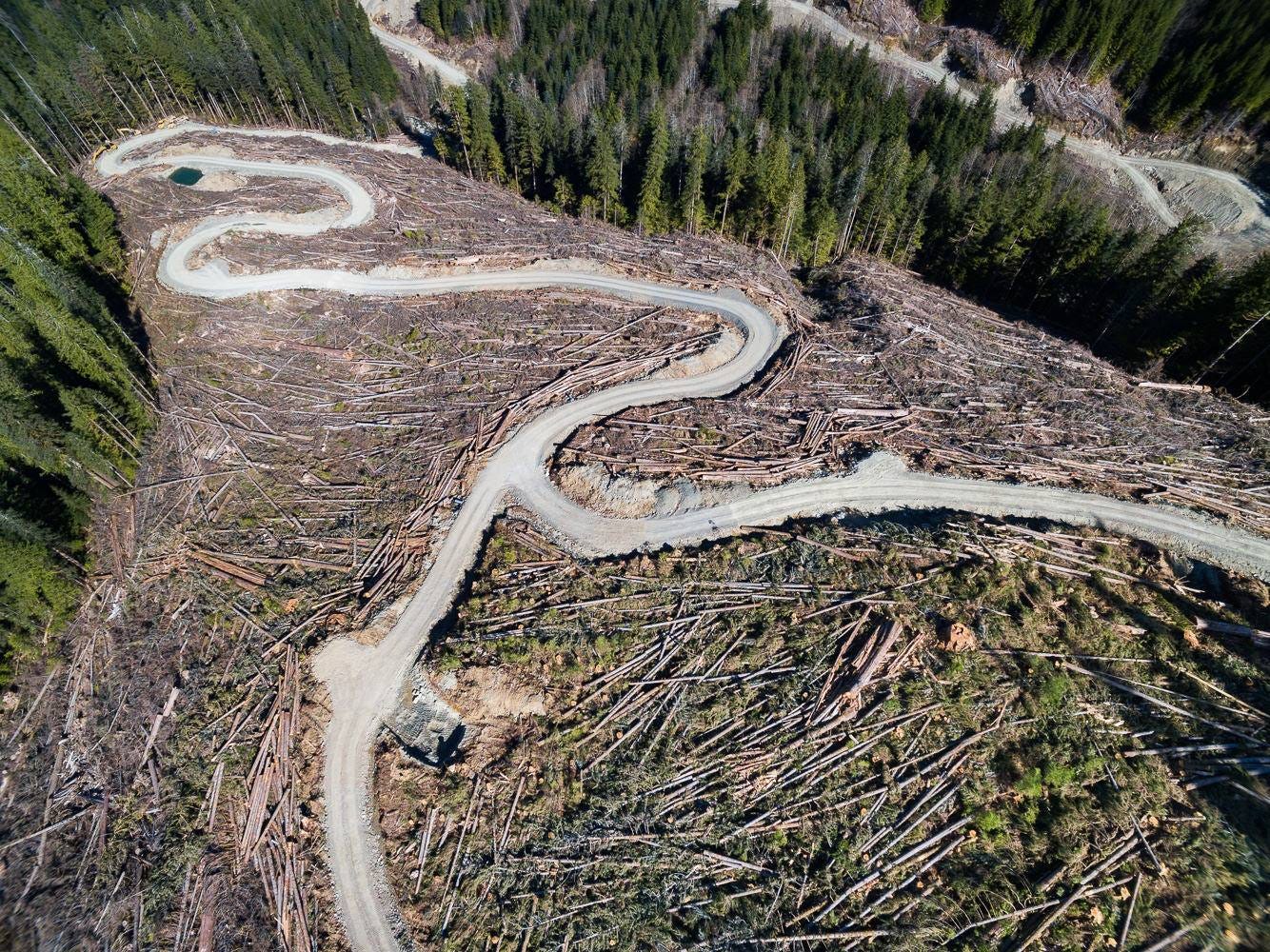
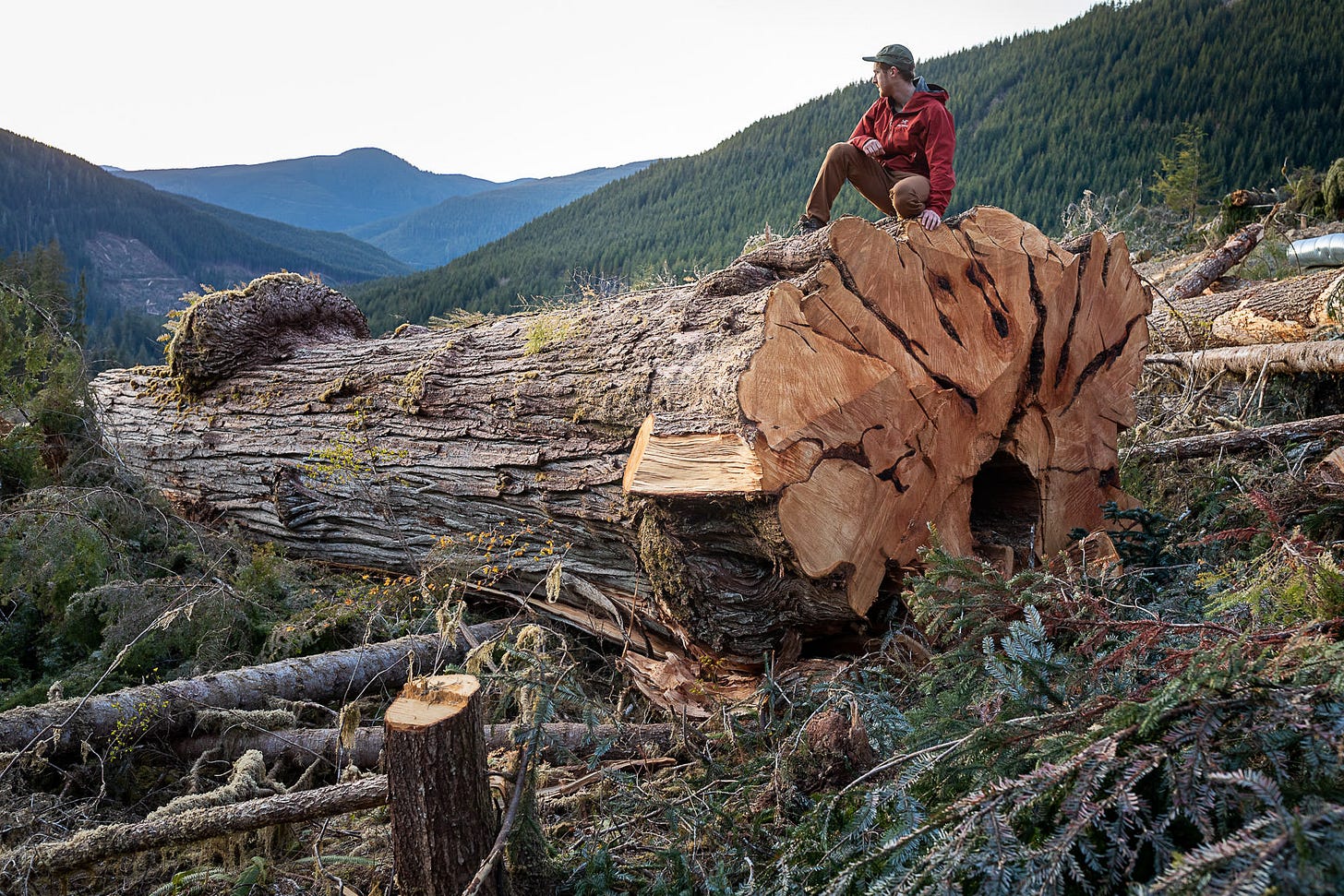
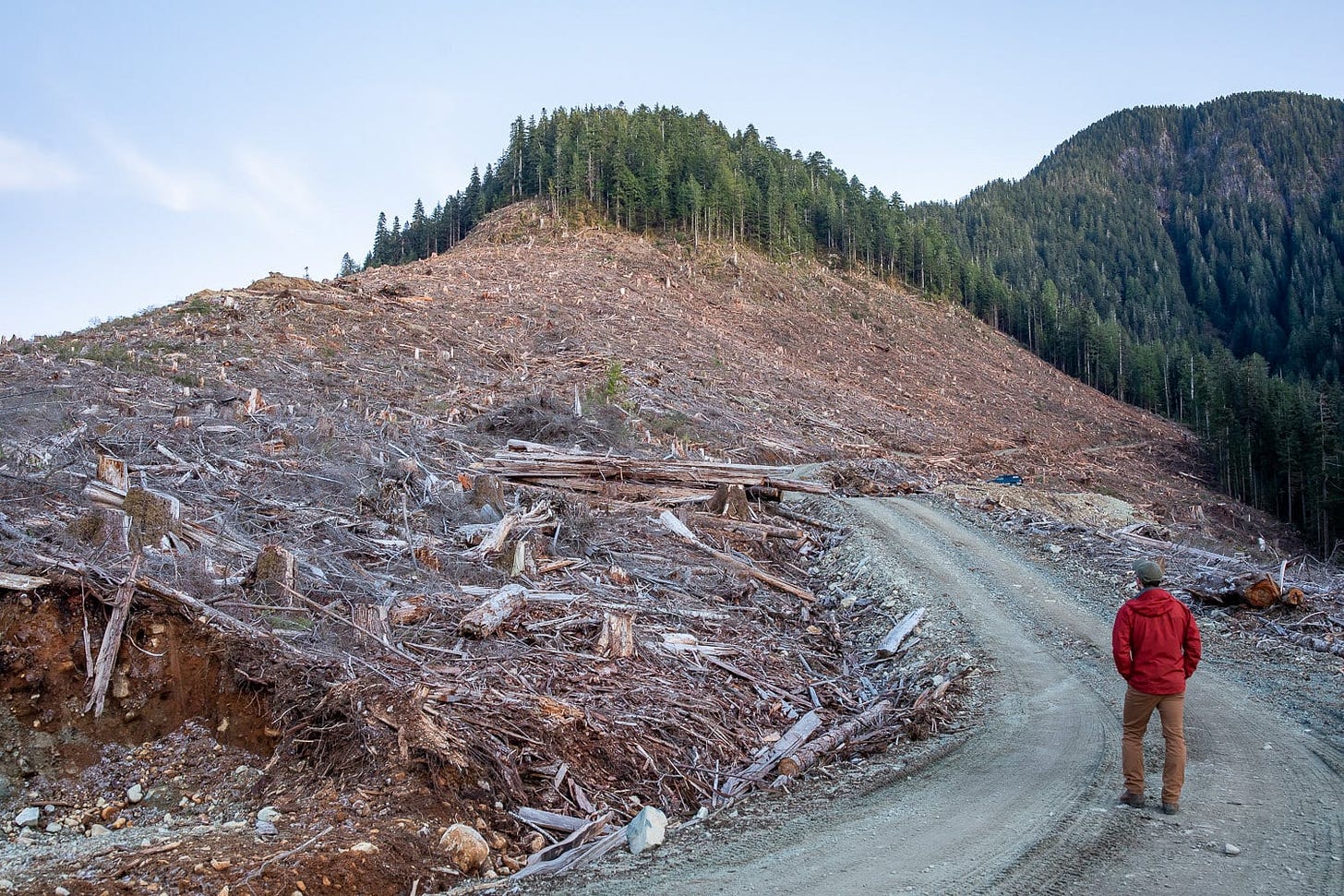
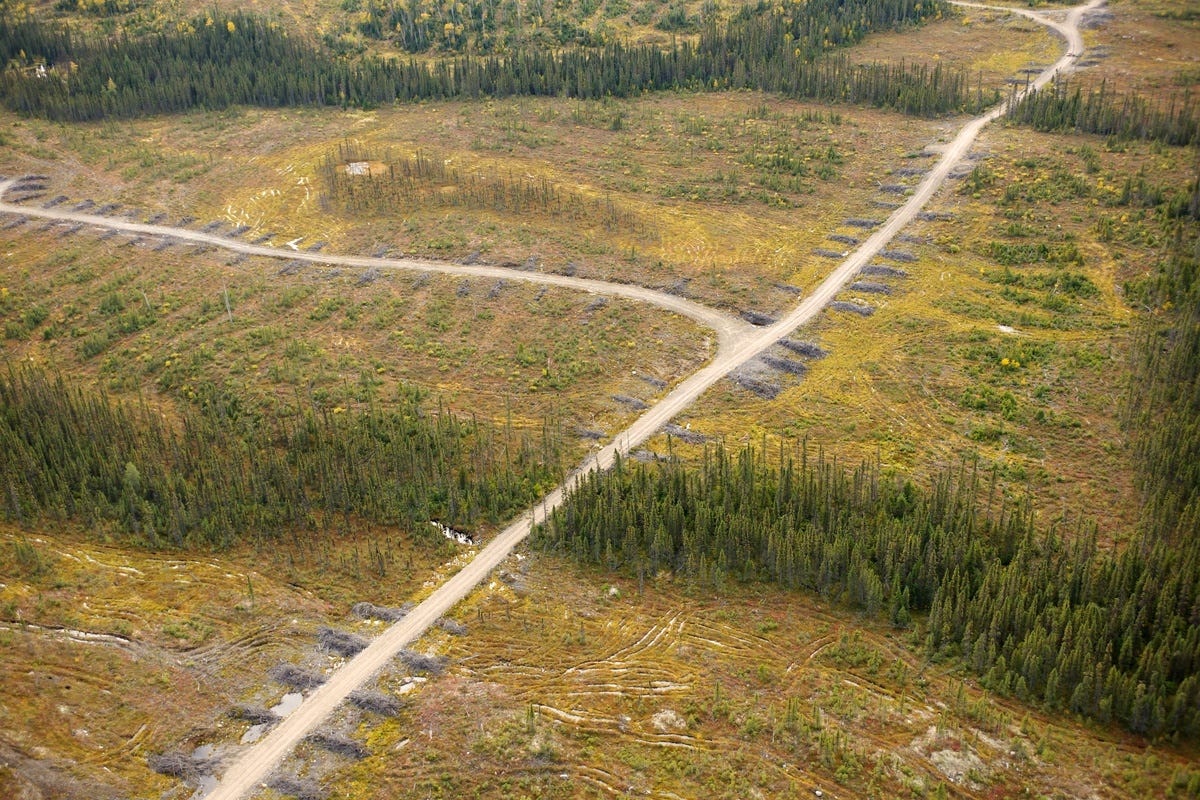
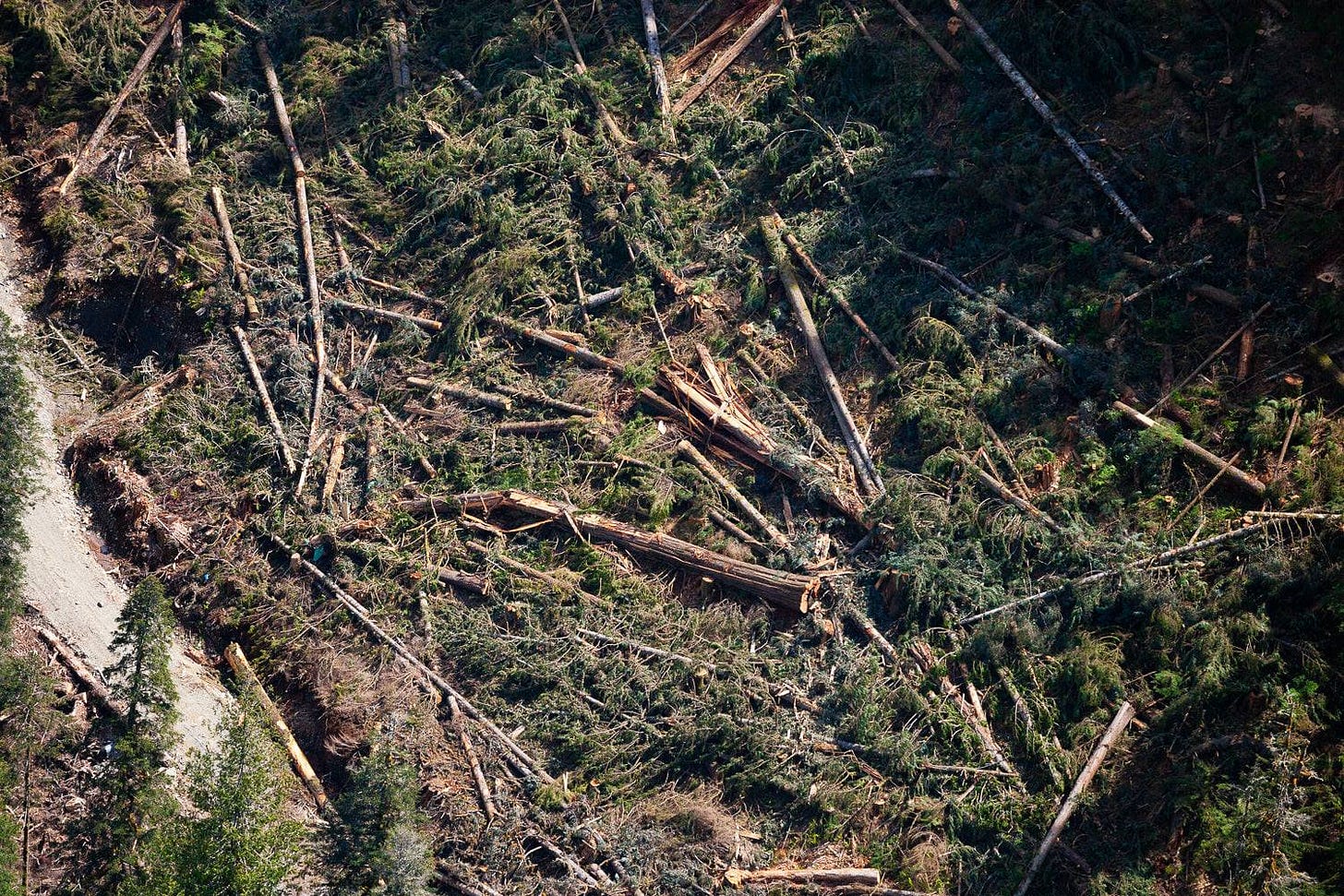
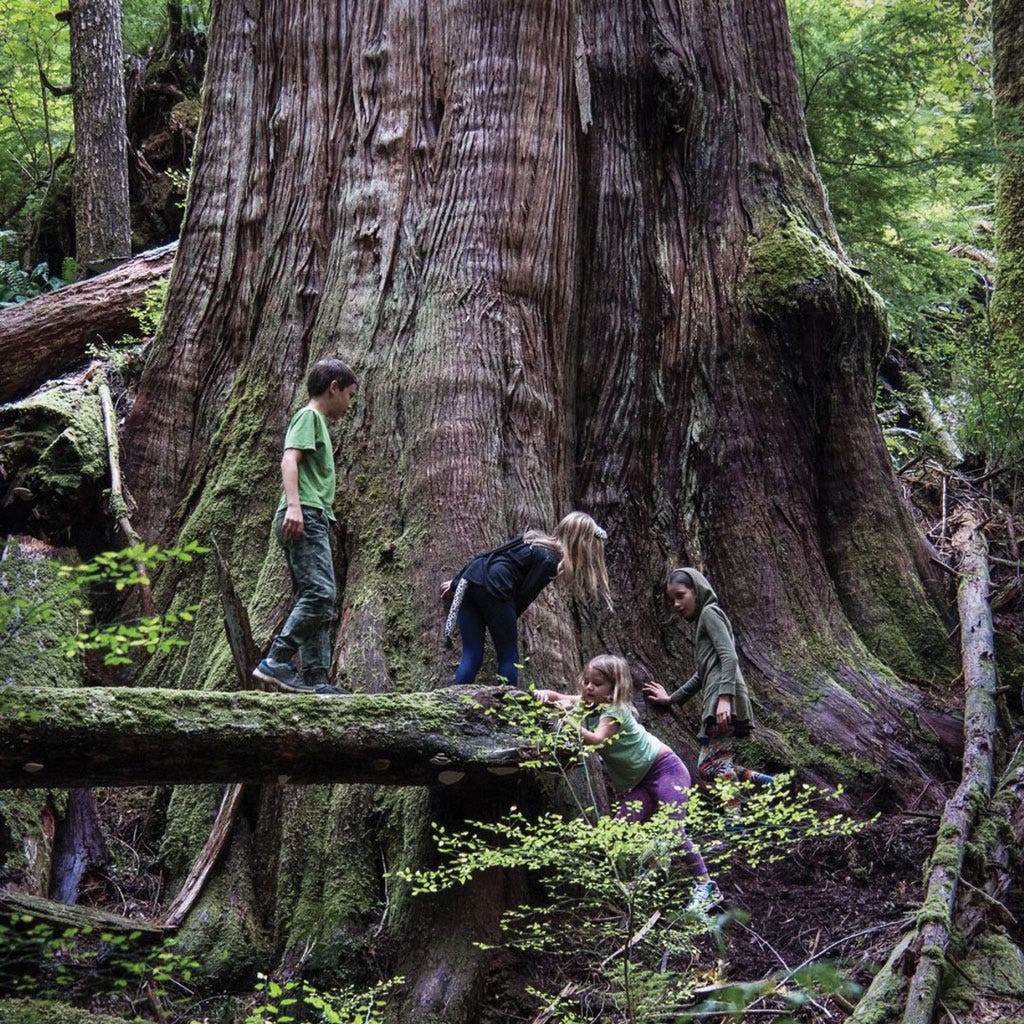
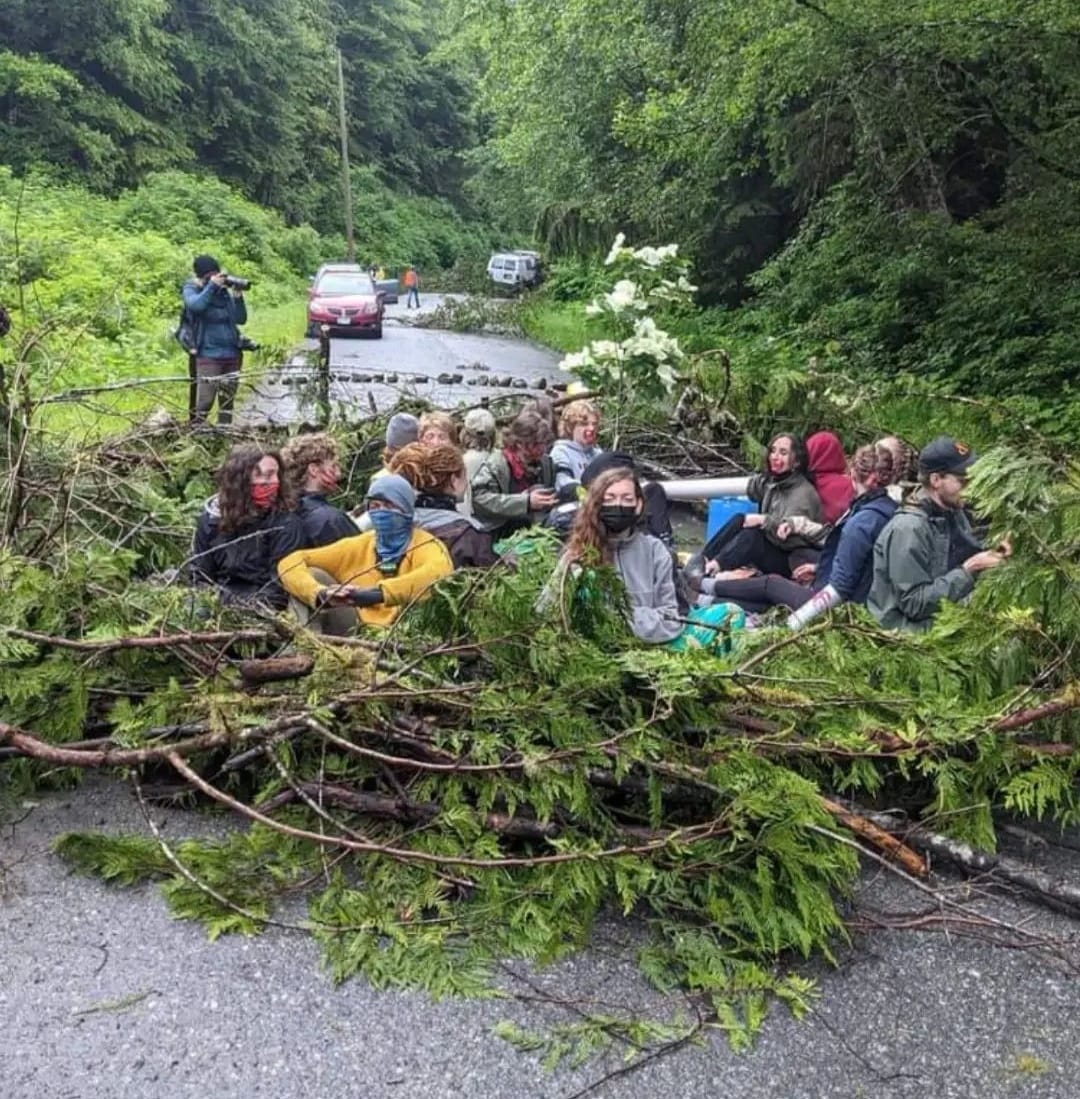
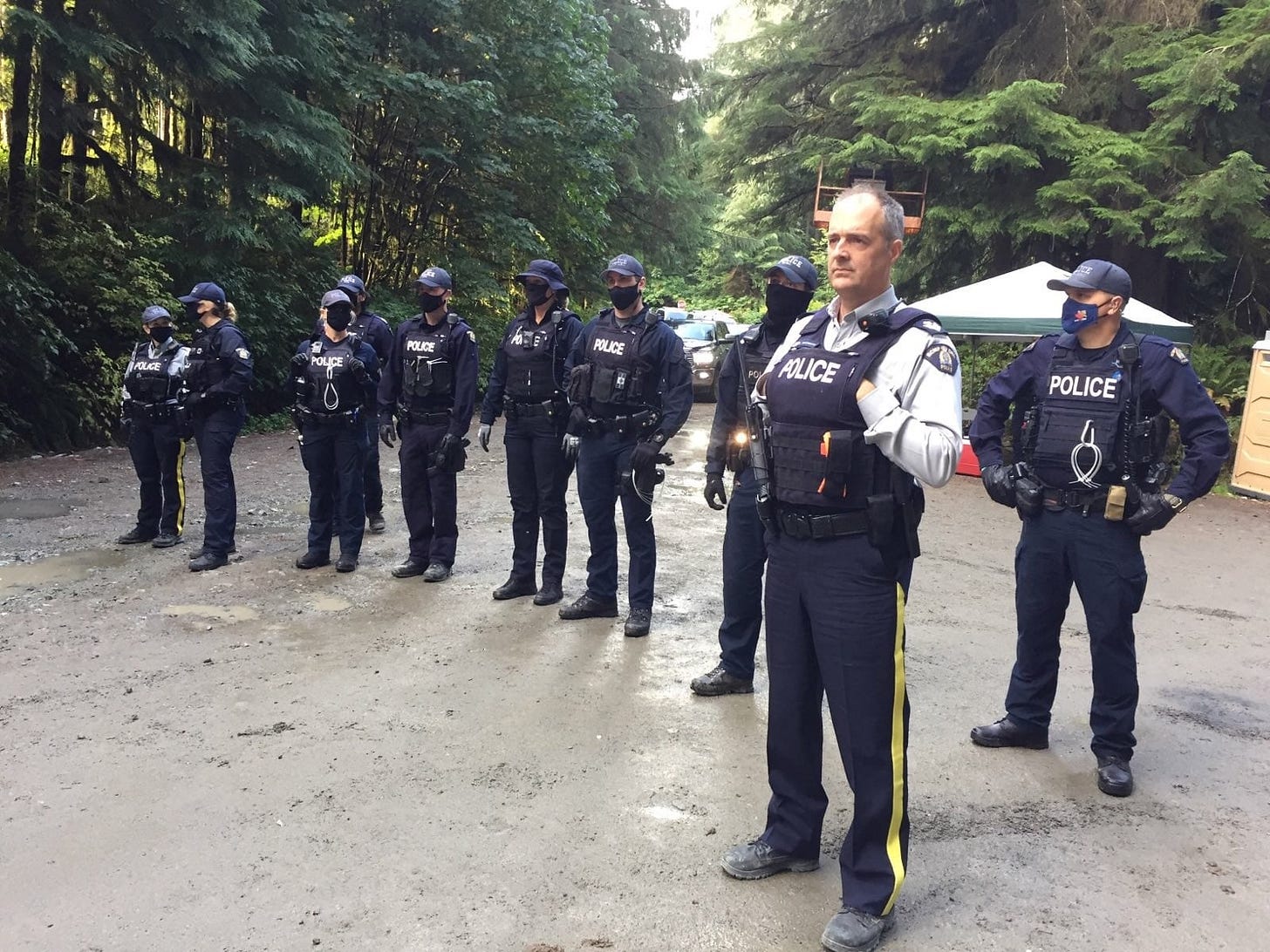
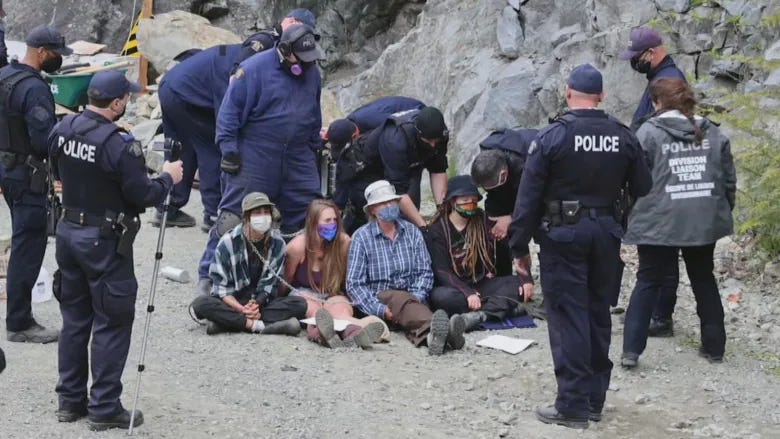
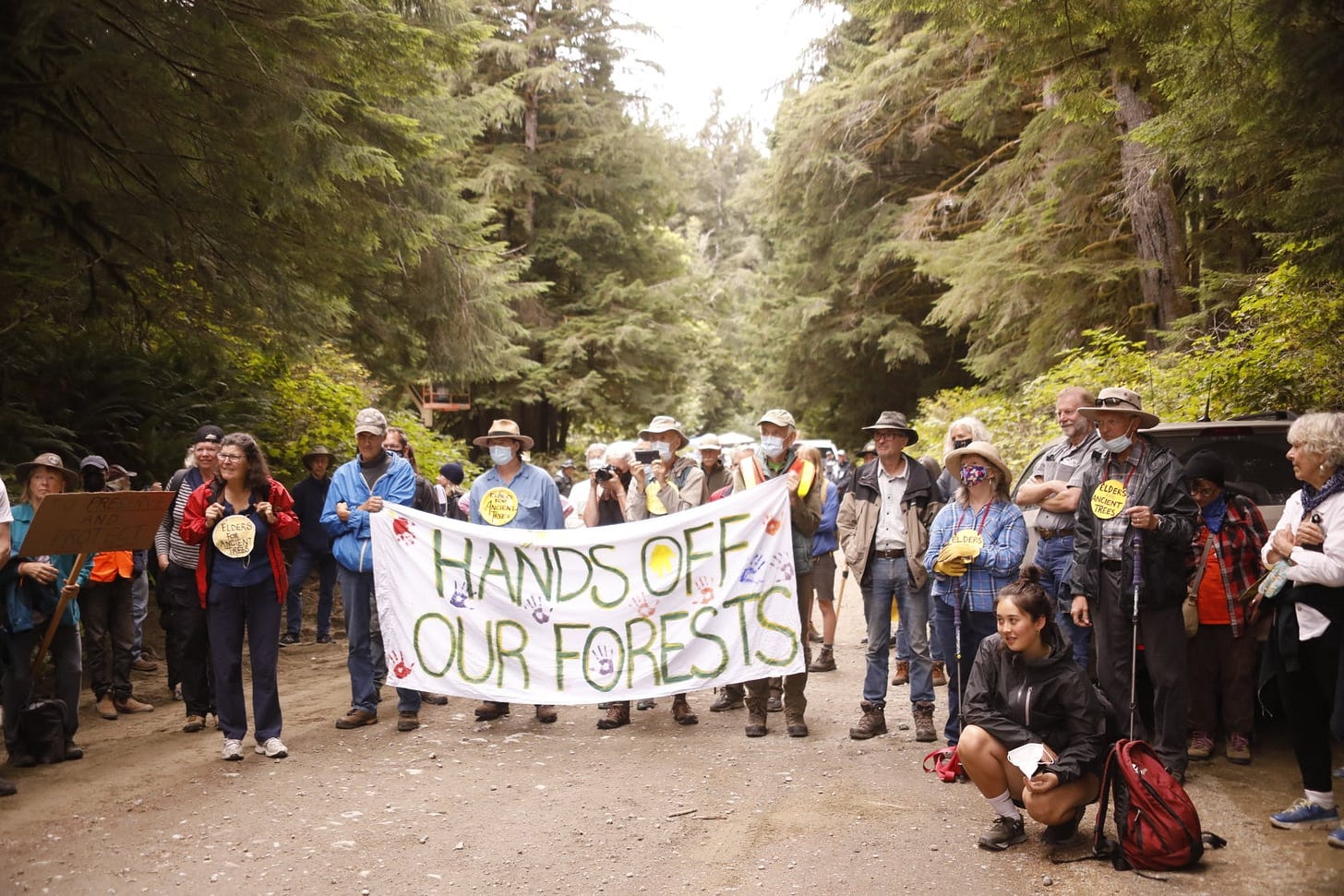
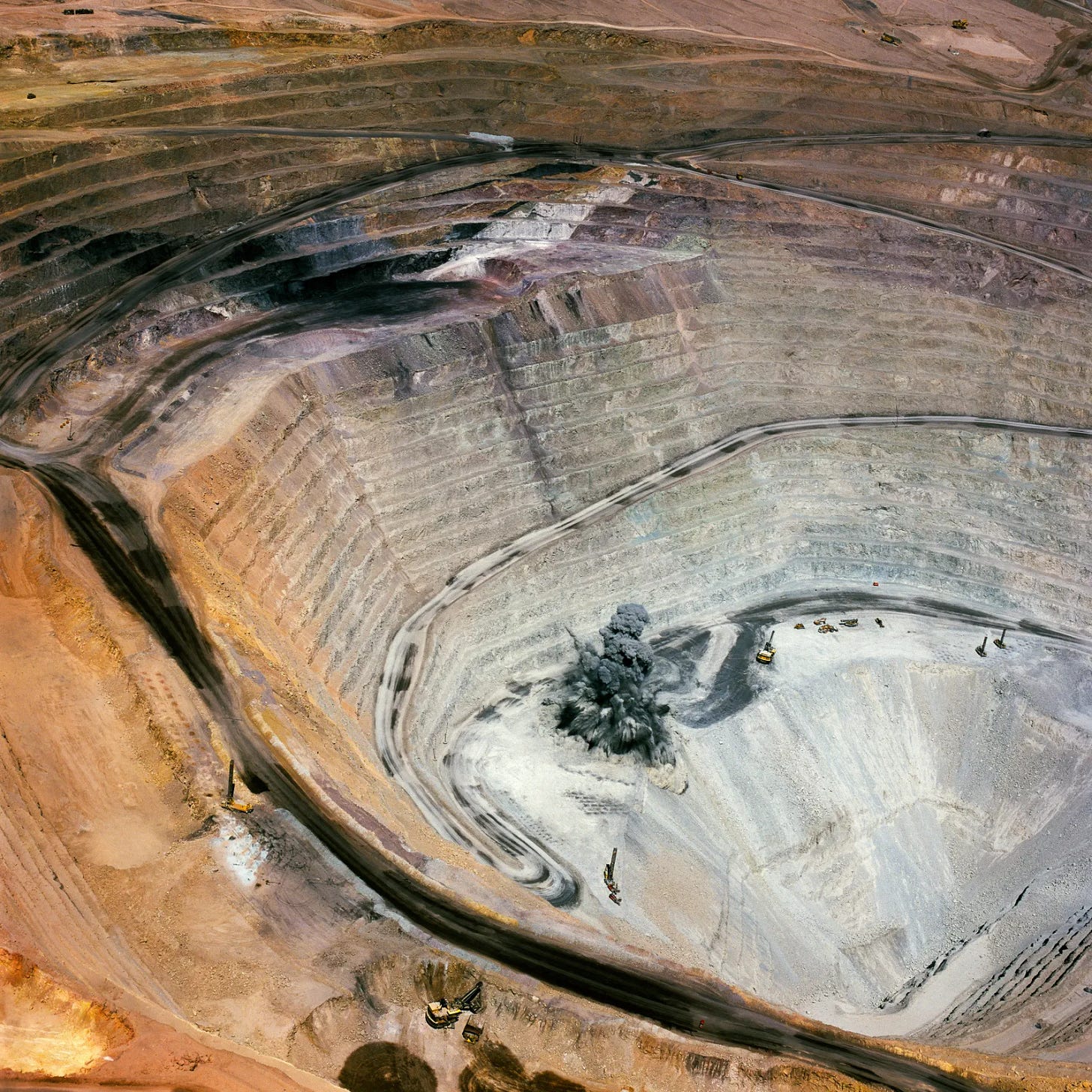
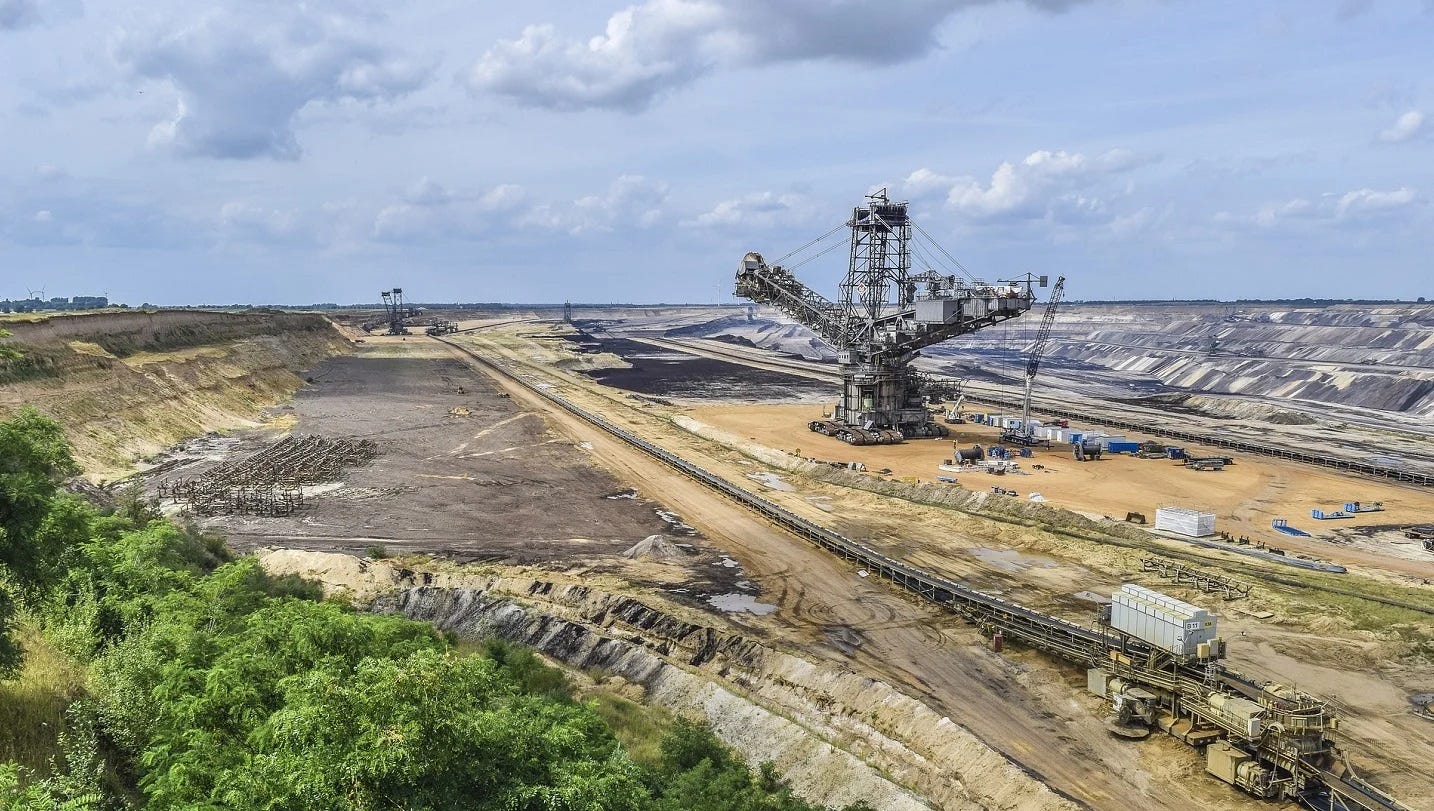

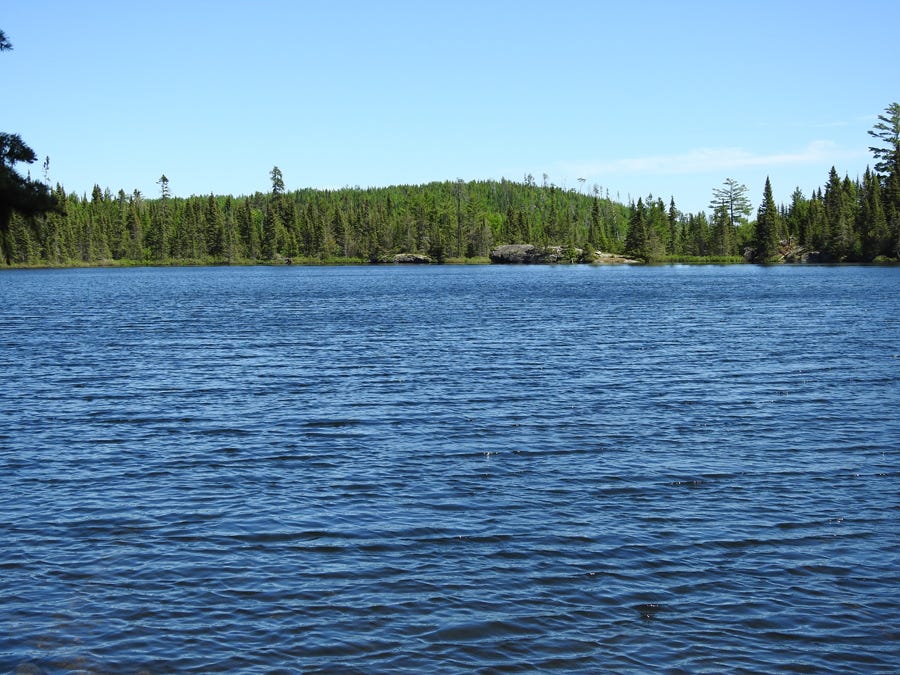
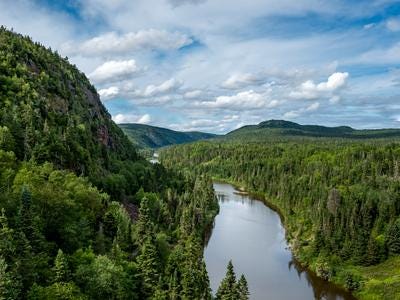
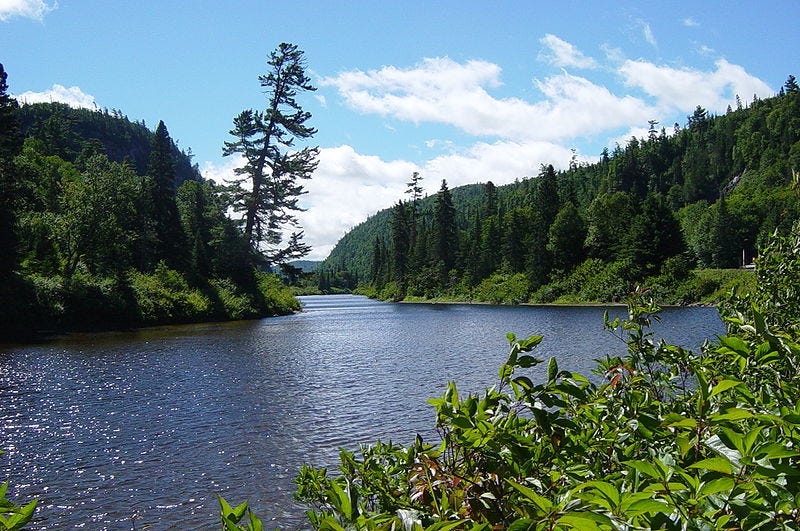
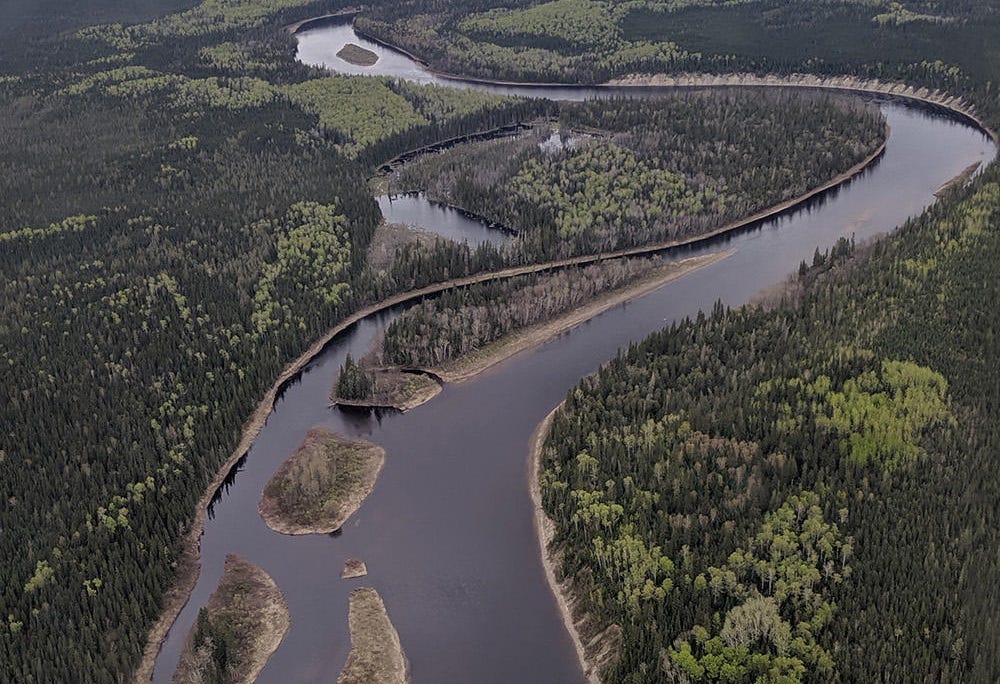
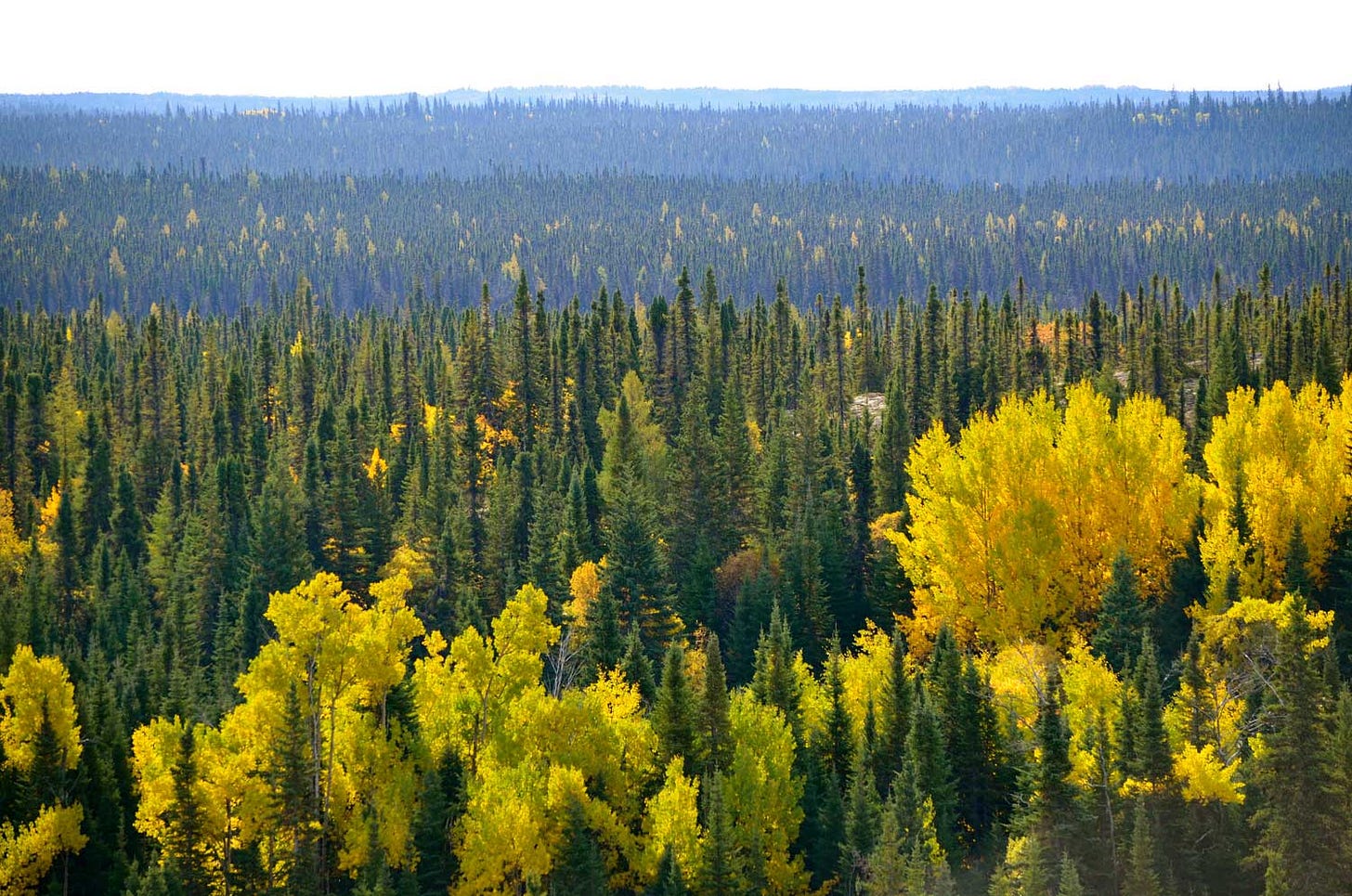
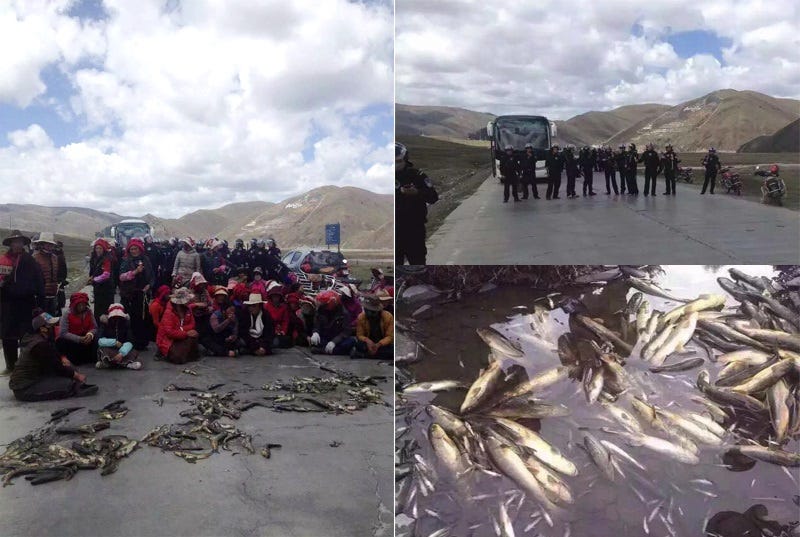

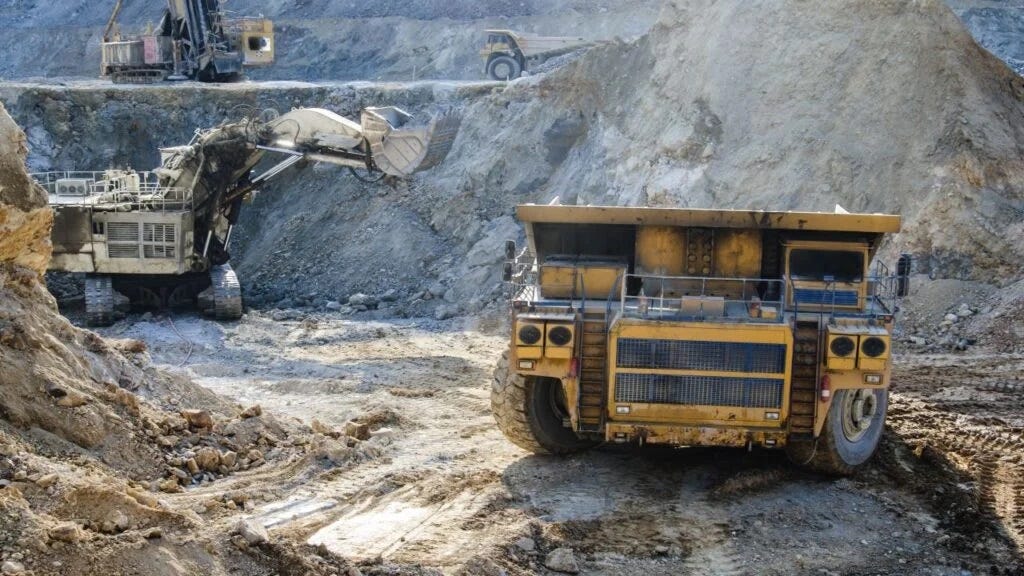


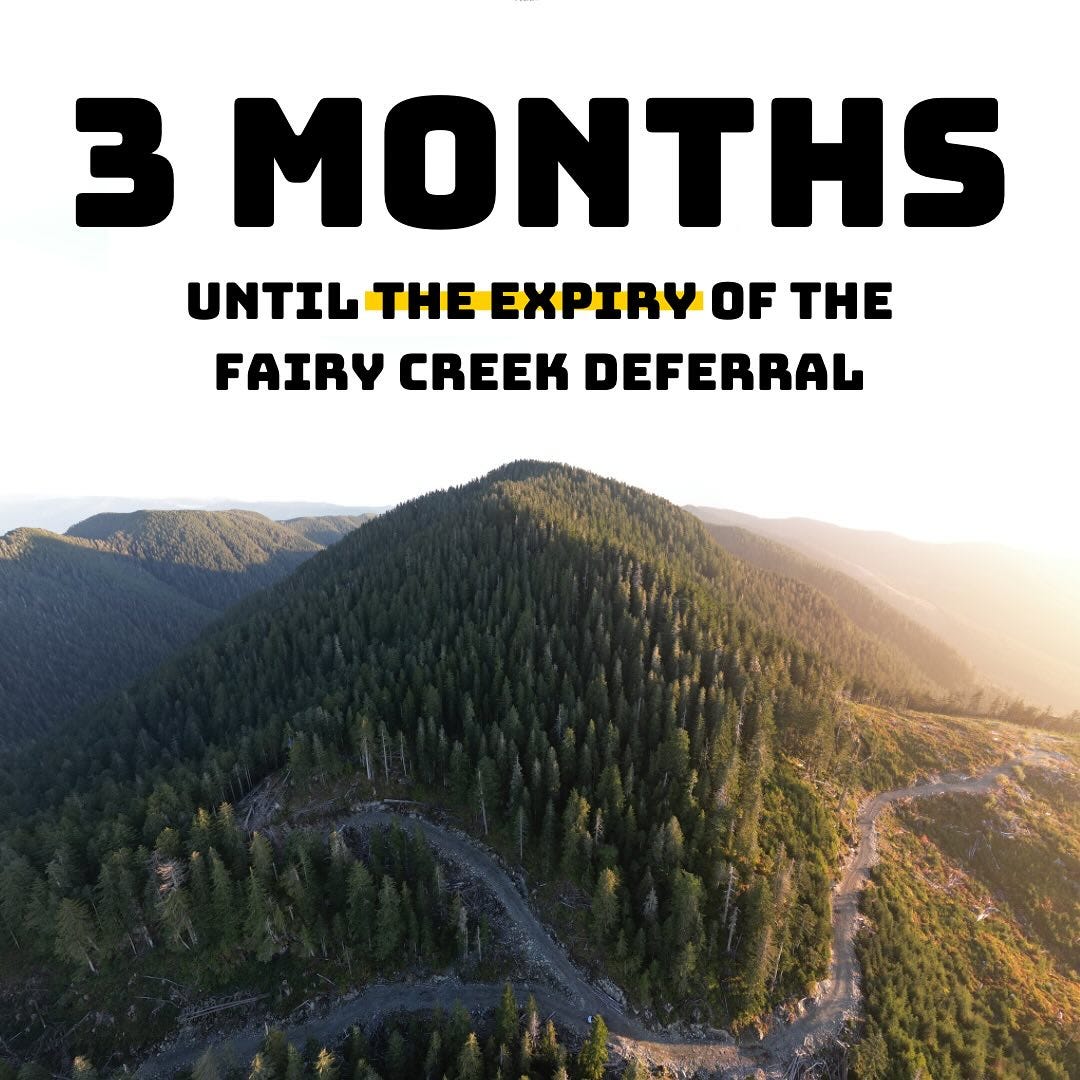
Dear Gavin. I started reading this in the morning and had to close my laptop. I just came back to it and forced myself to read everything. My heart started hurting from the very first photograph because I knew what was coming. I know this must have been beyond painful for you to write.
When I drive just a couple of miles down the road from me and see the ongoing destruction (since last summer) of 200,000+ trees that were cut down by one powerful asshole in our little town who thought maybe he'd put a compost operation in there (it's zoned residential), I feel myself go from sorrow to rage in a matter of seconds. I moved to New Hampshire BECAUSE of the trees. This is the damage that one wealthy/connected man can do. What you're writing about is a whole new level of disgusting corporate greed. I went to the website of the paper company you mentioned. What a joke.
You are our neighbors to the North. The same thing goes on down here. As you say, the taxpayers are funding this. North America is a green gem that is being chipped away at, bit by bit. It’s soul-crushing. Thank you for doing the hard work of bringing all of this ugliness to light, Gavin. I’m going for a walk in the woods now to be with the trees. 💚
"Do not allow their badges and reassuring uniforms to confuse you, make no mistake, these are the foot soldiers and enforcement arm in a corporate war on nature. "... Can we just call them what they are?... That being "Jack-Booted Thugs"